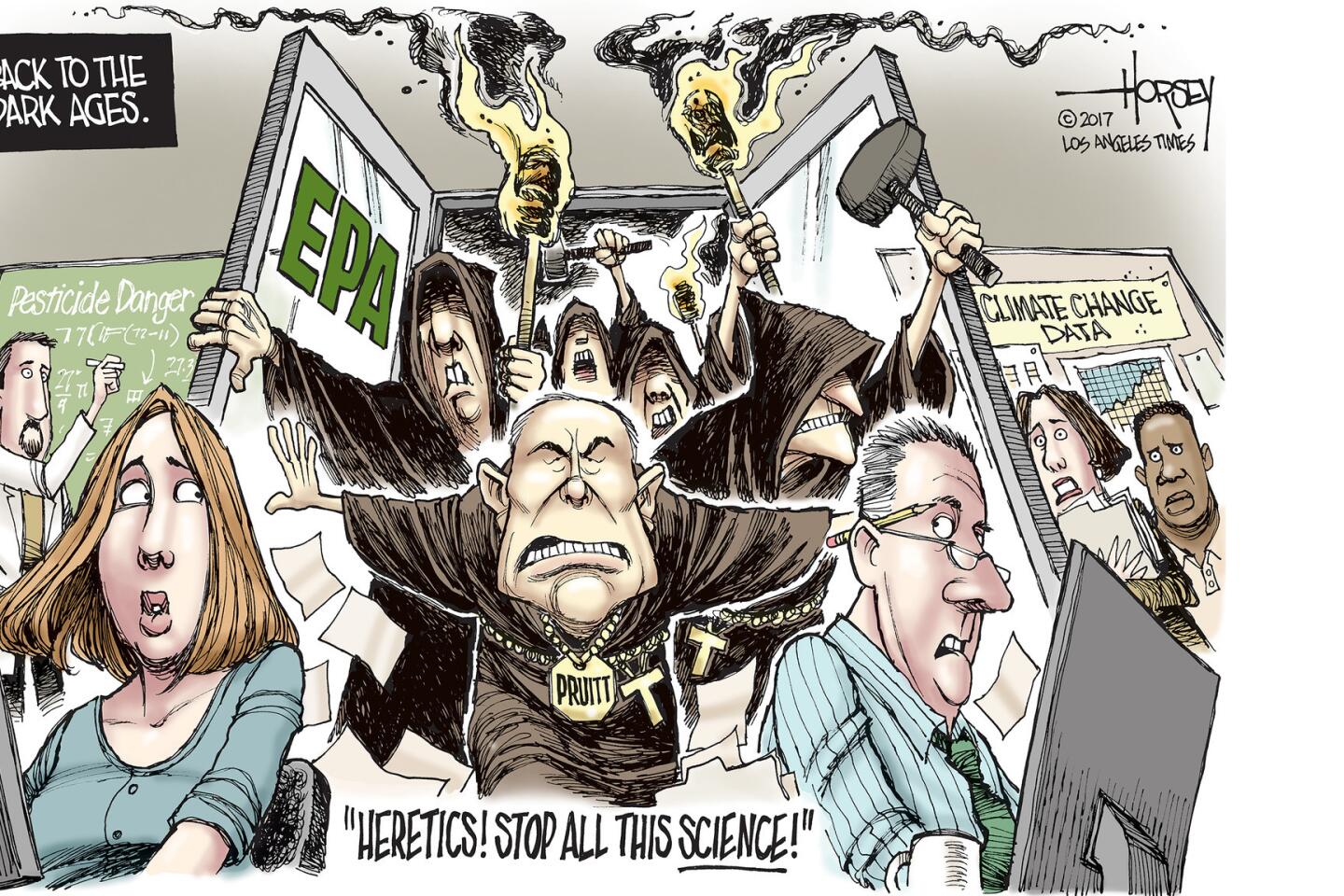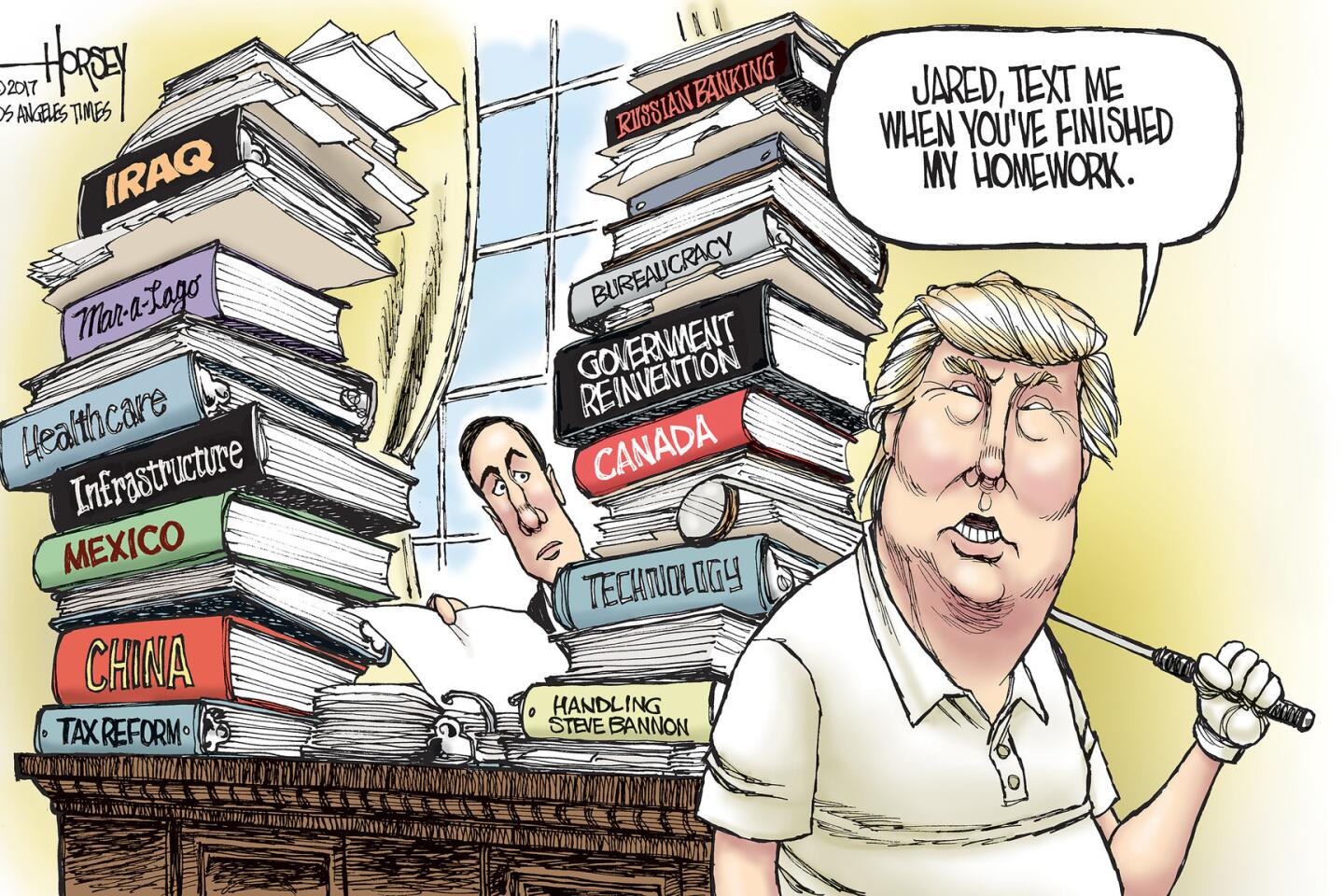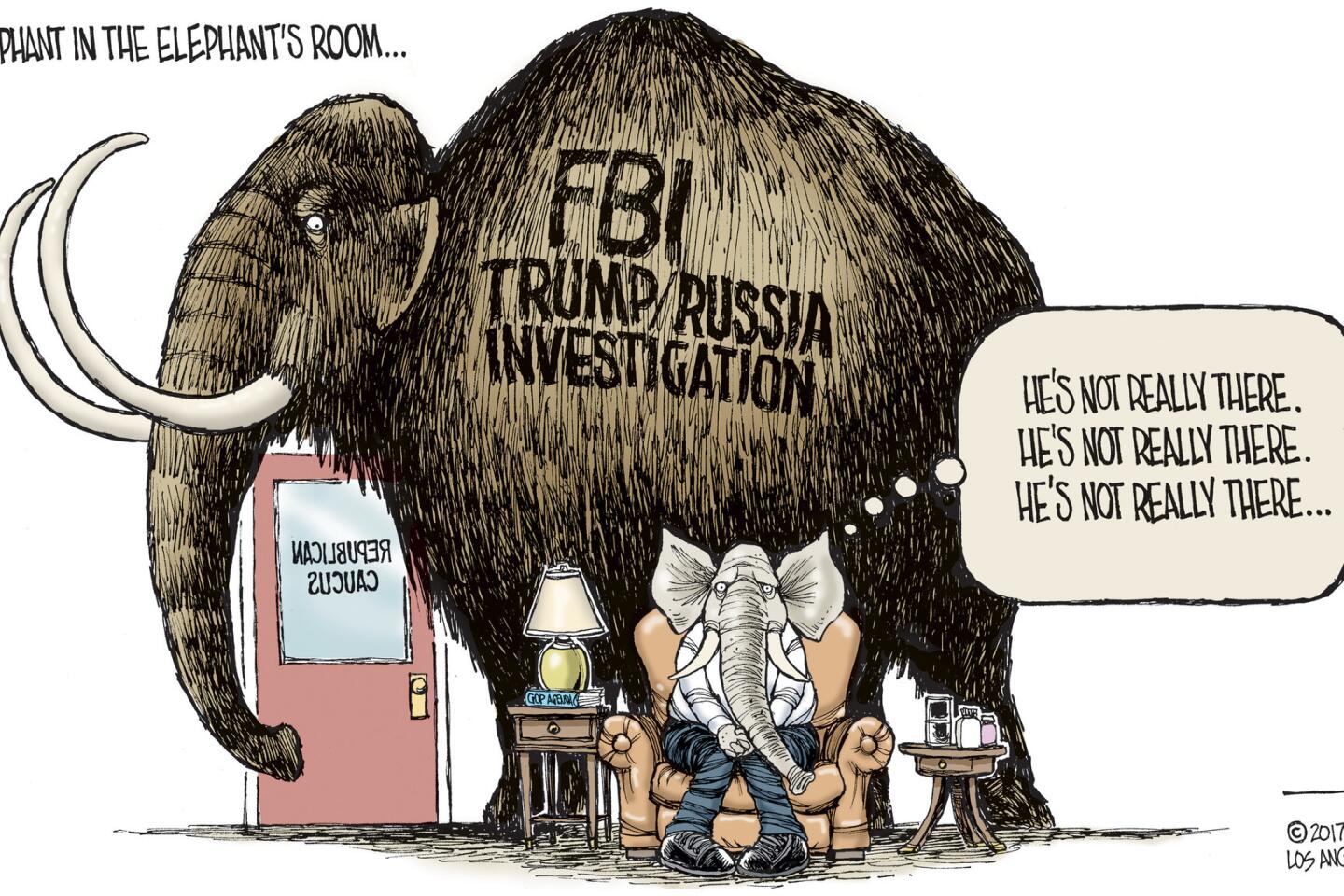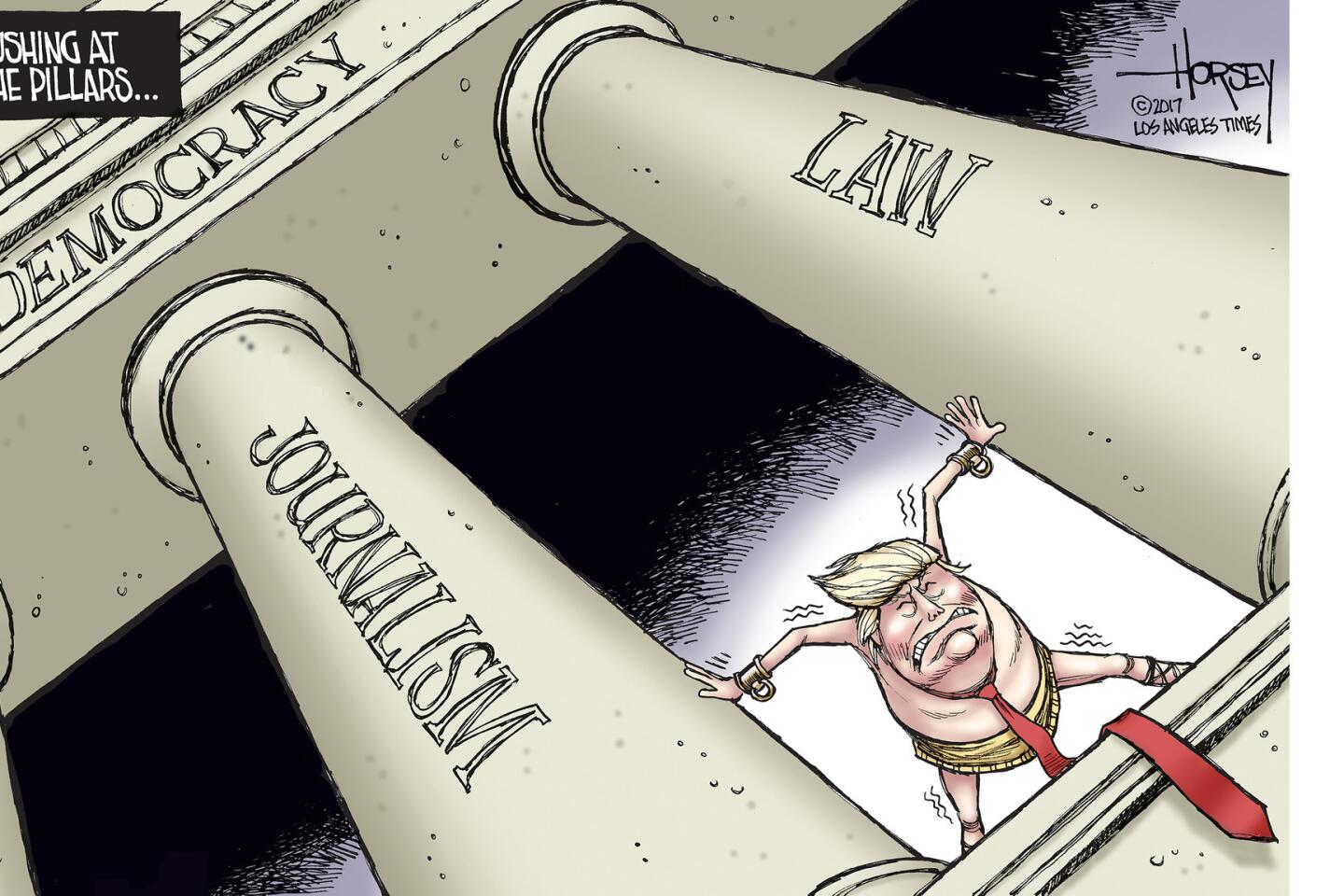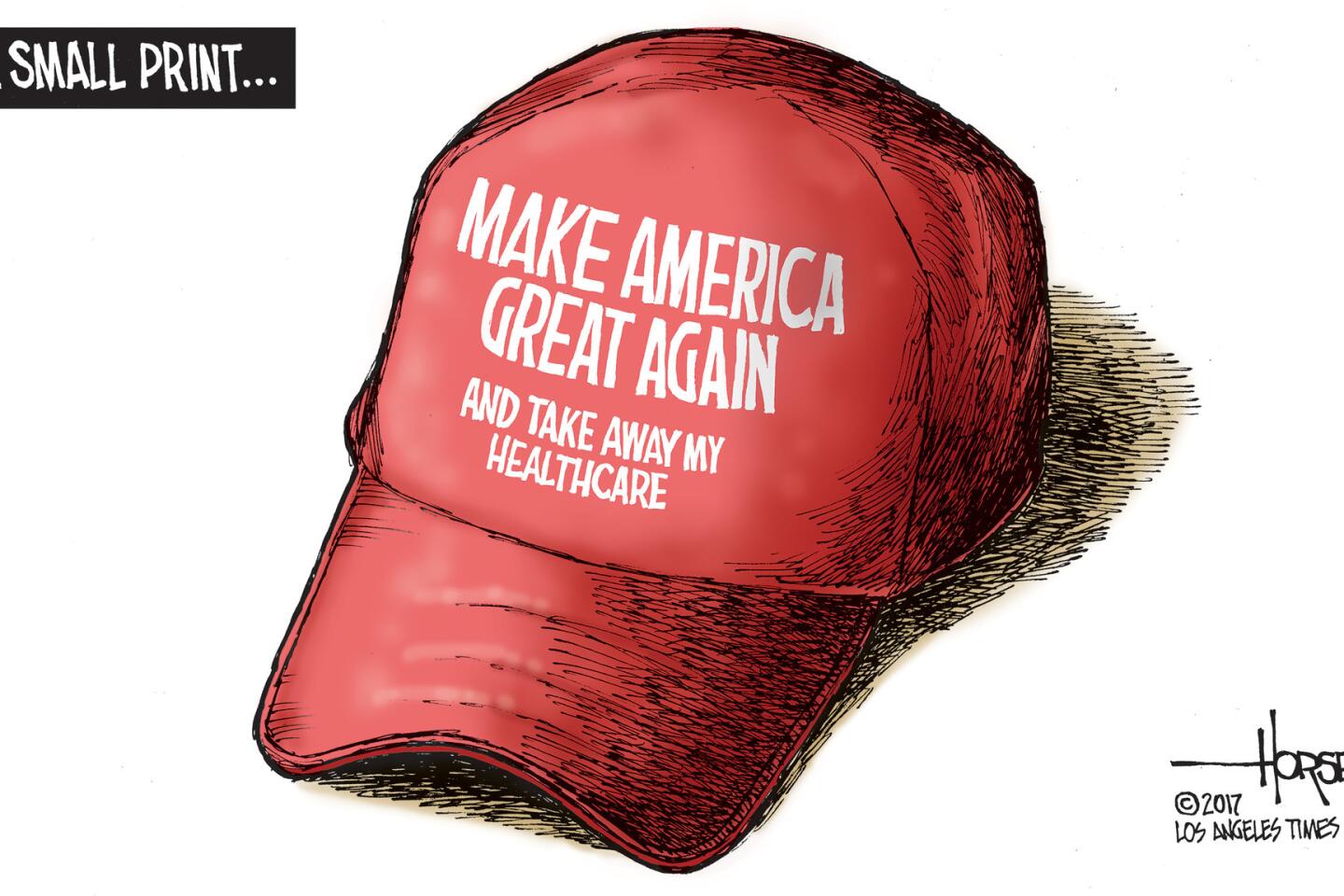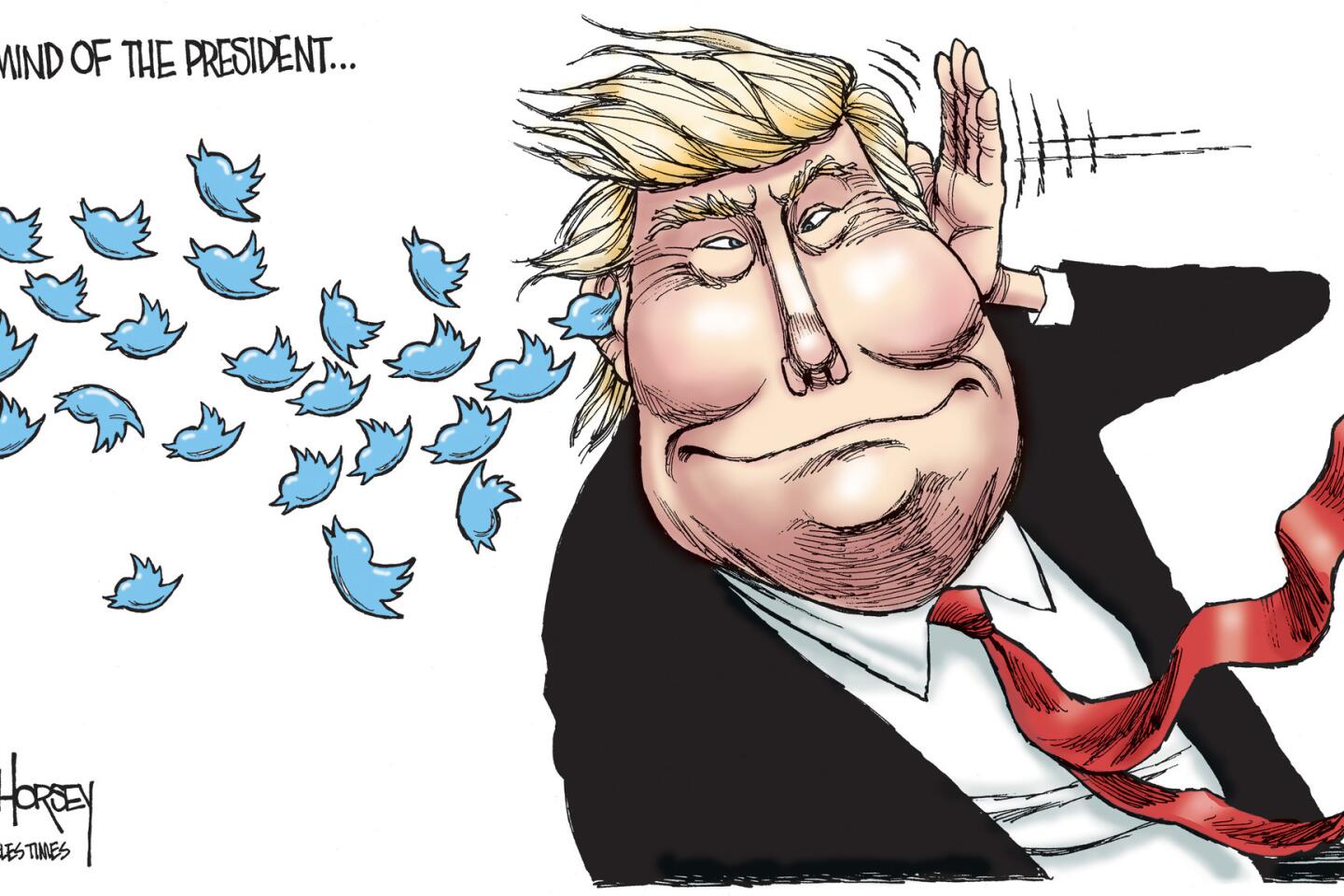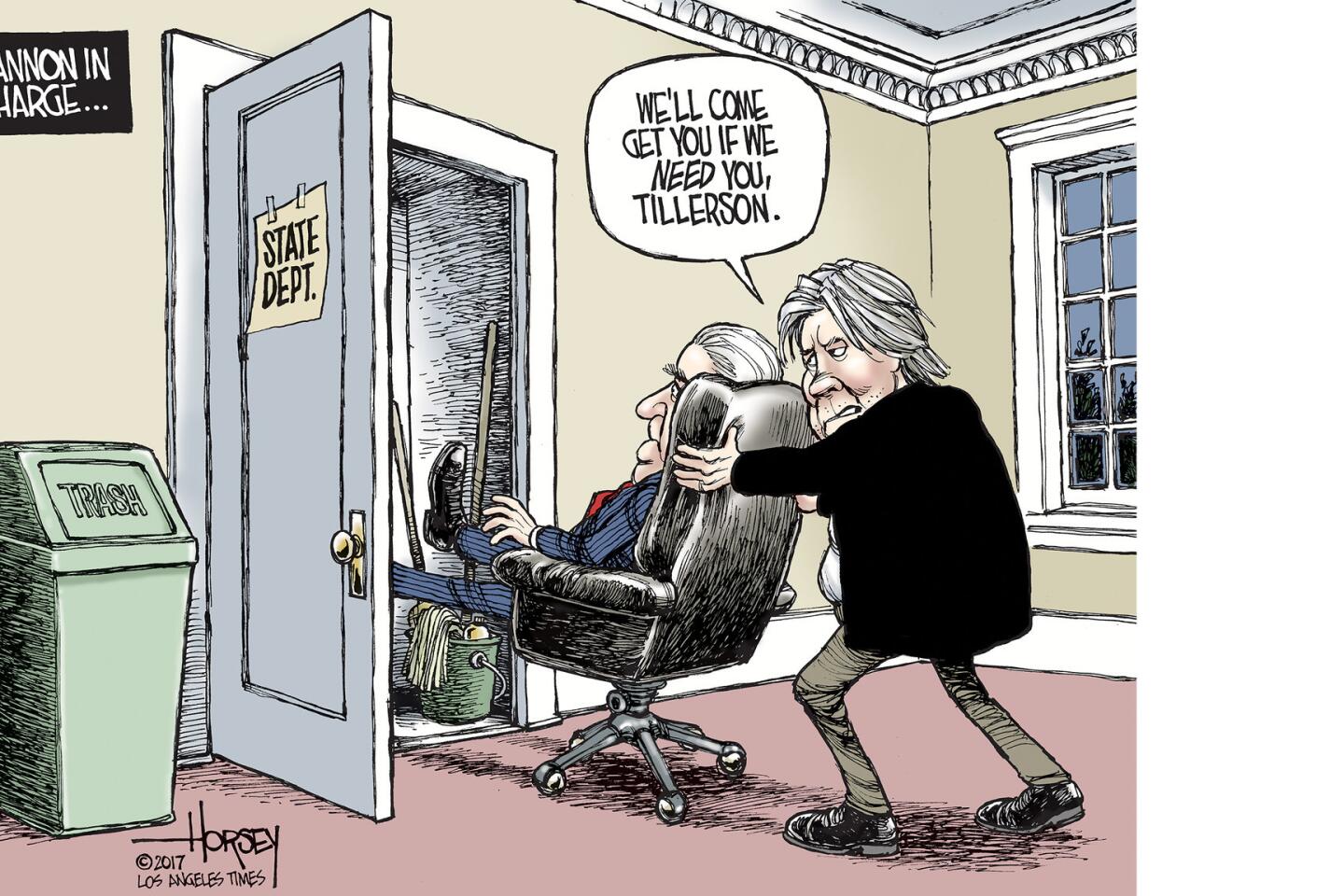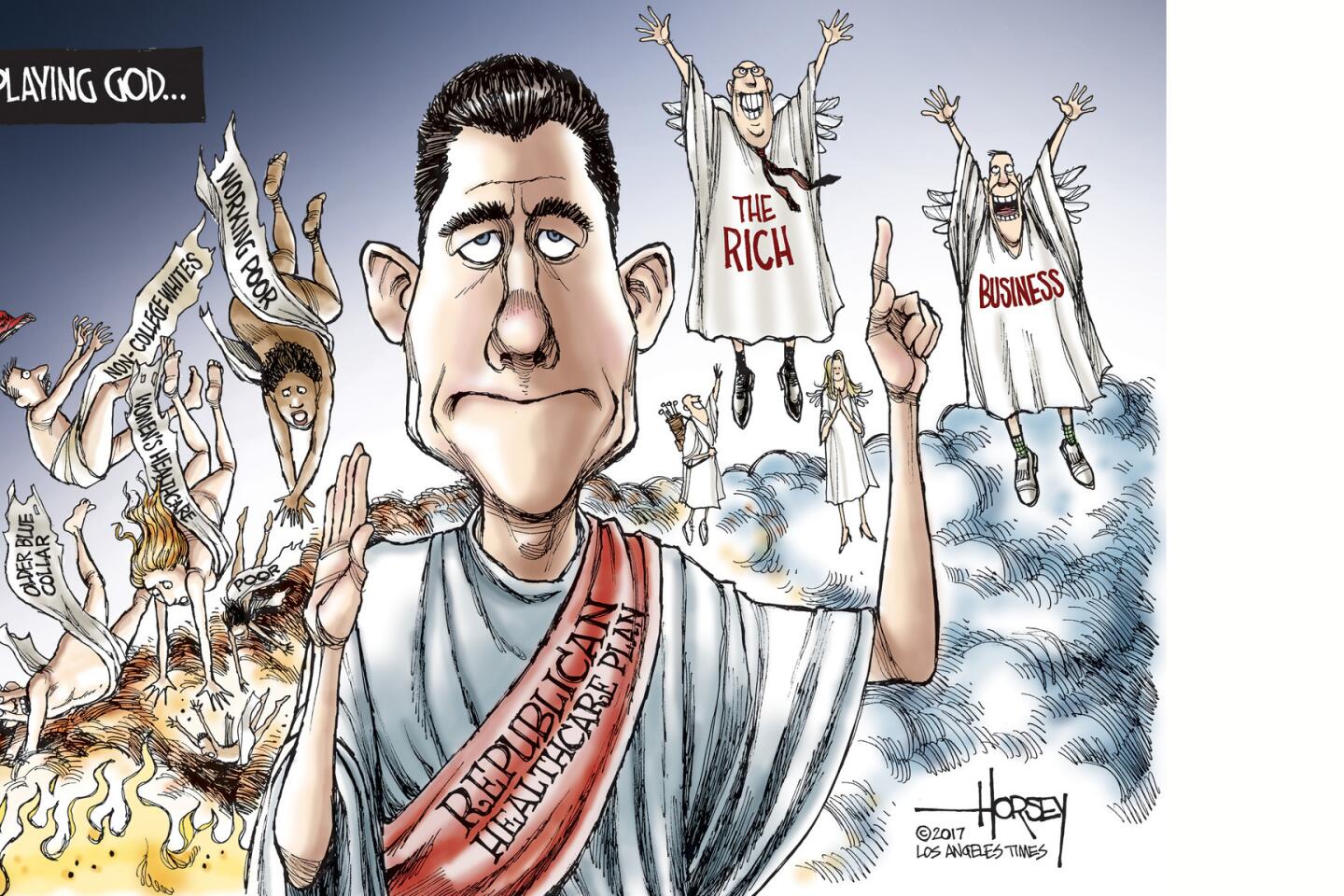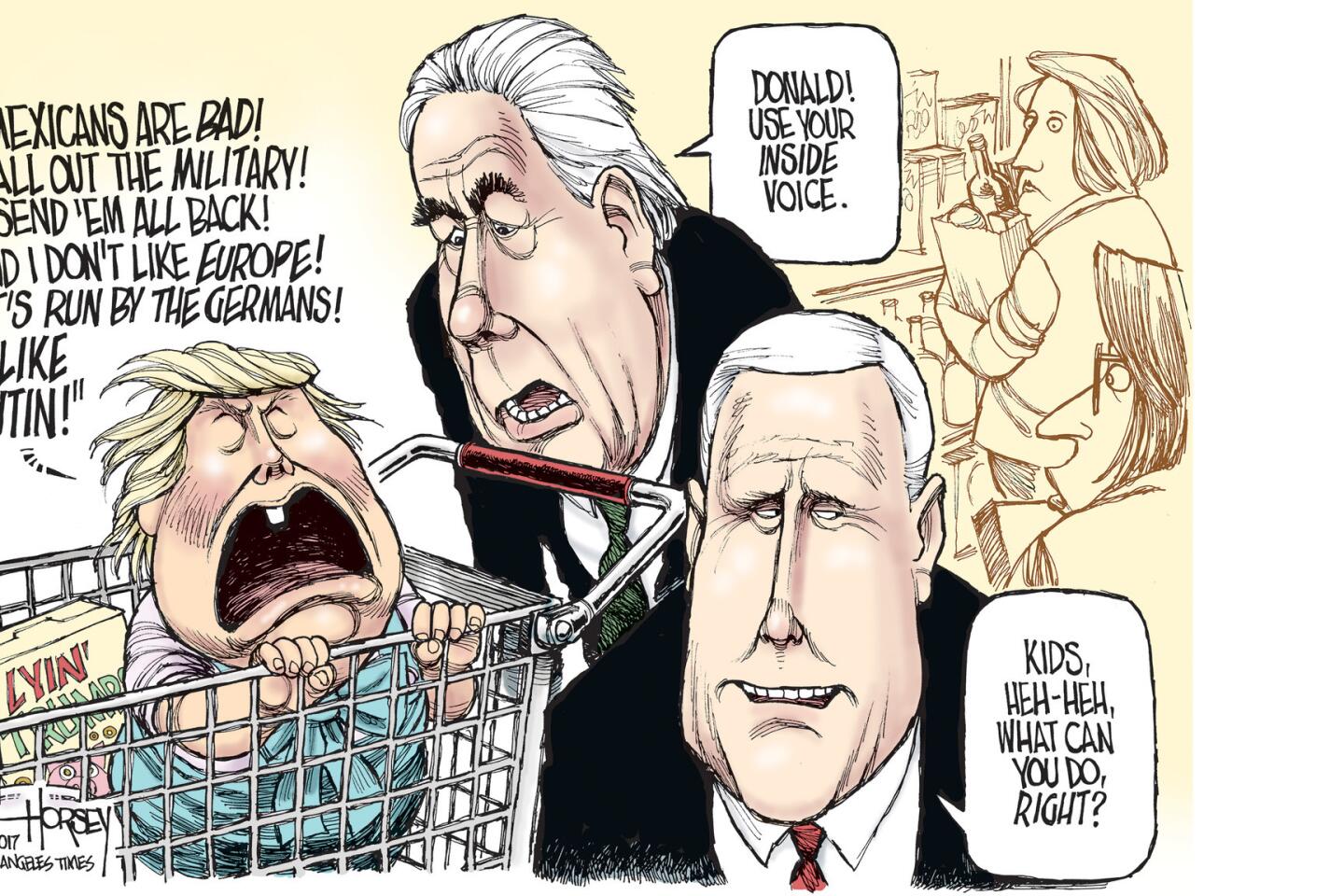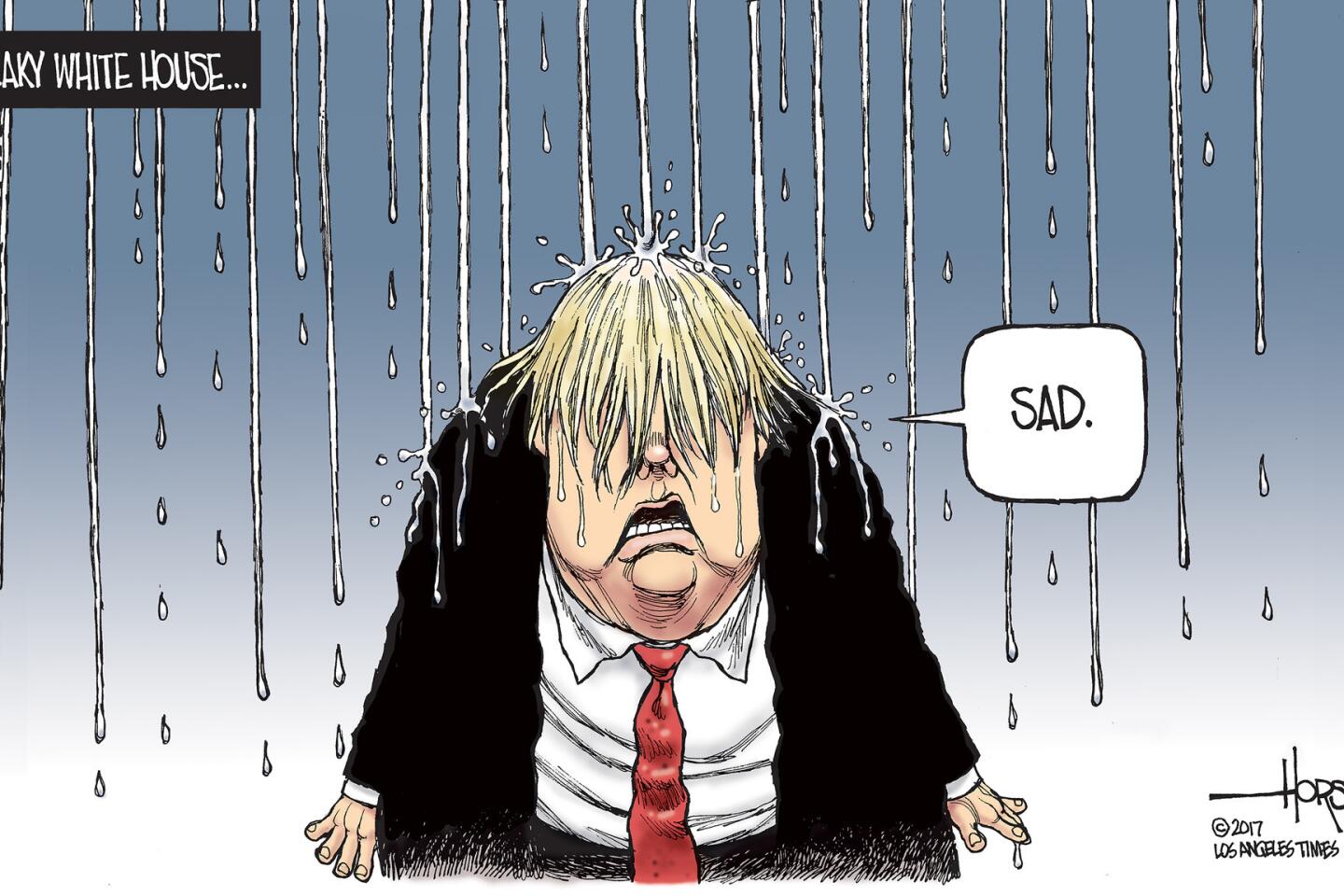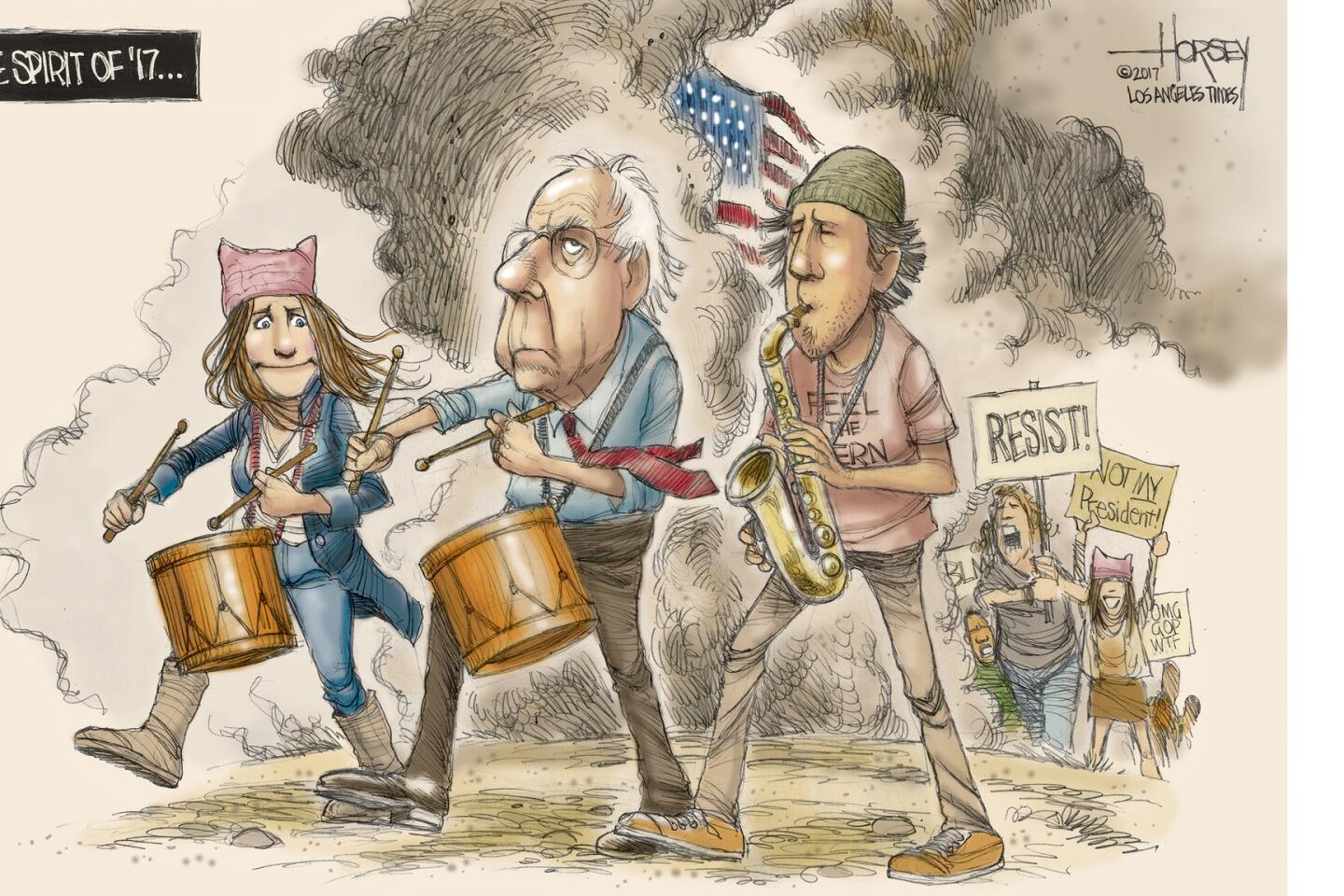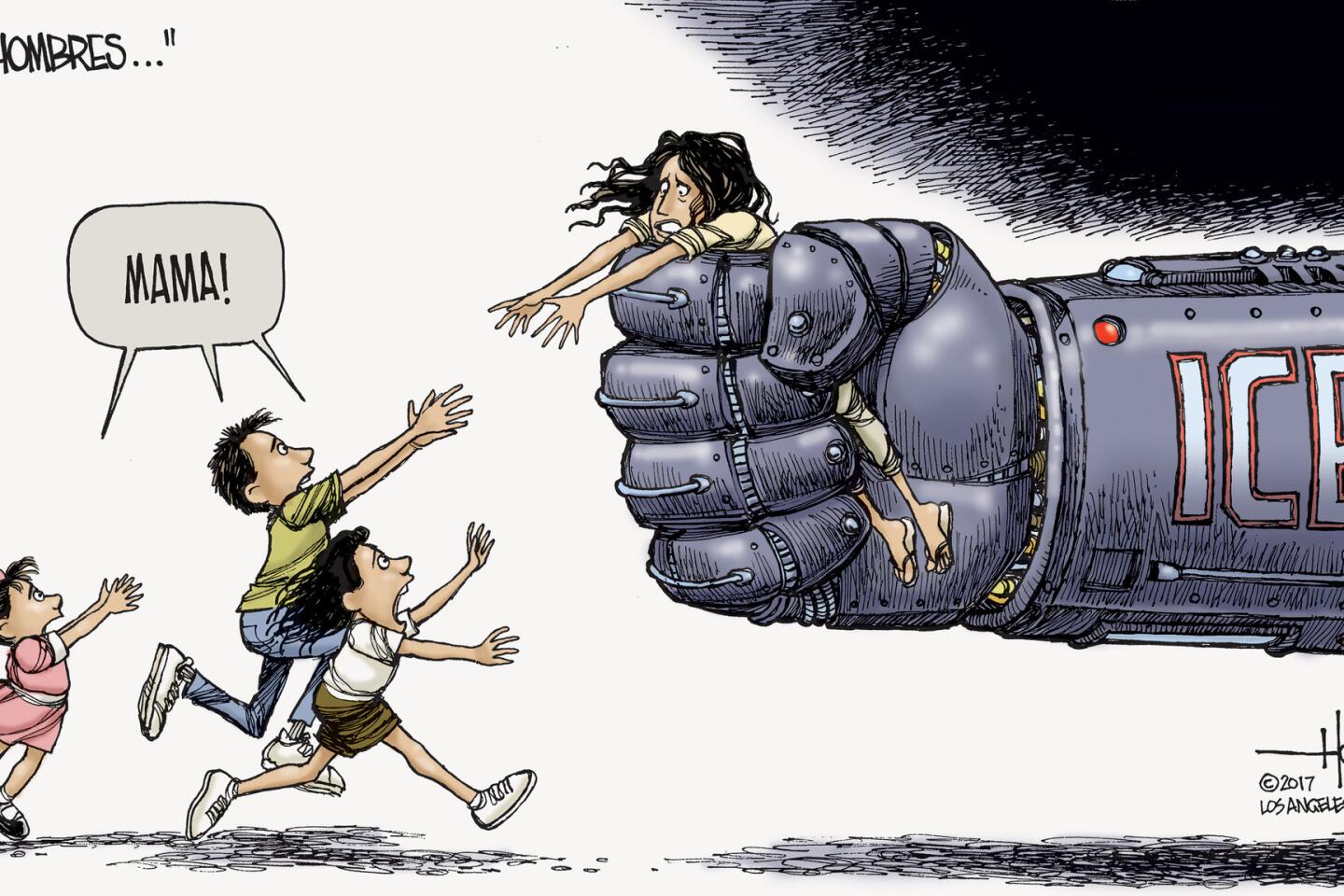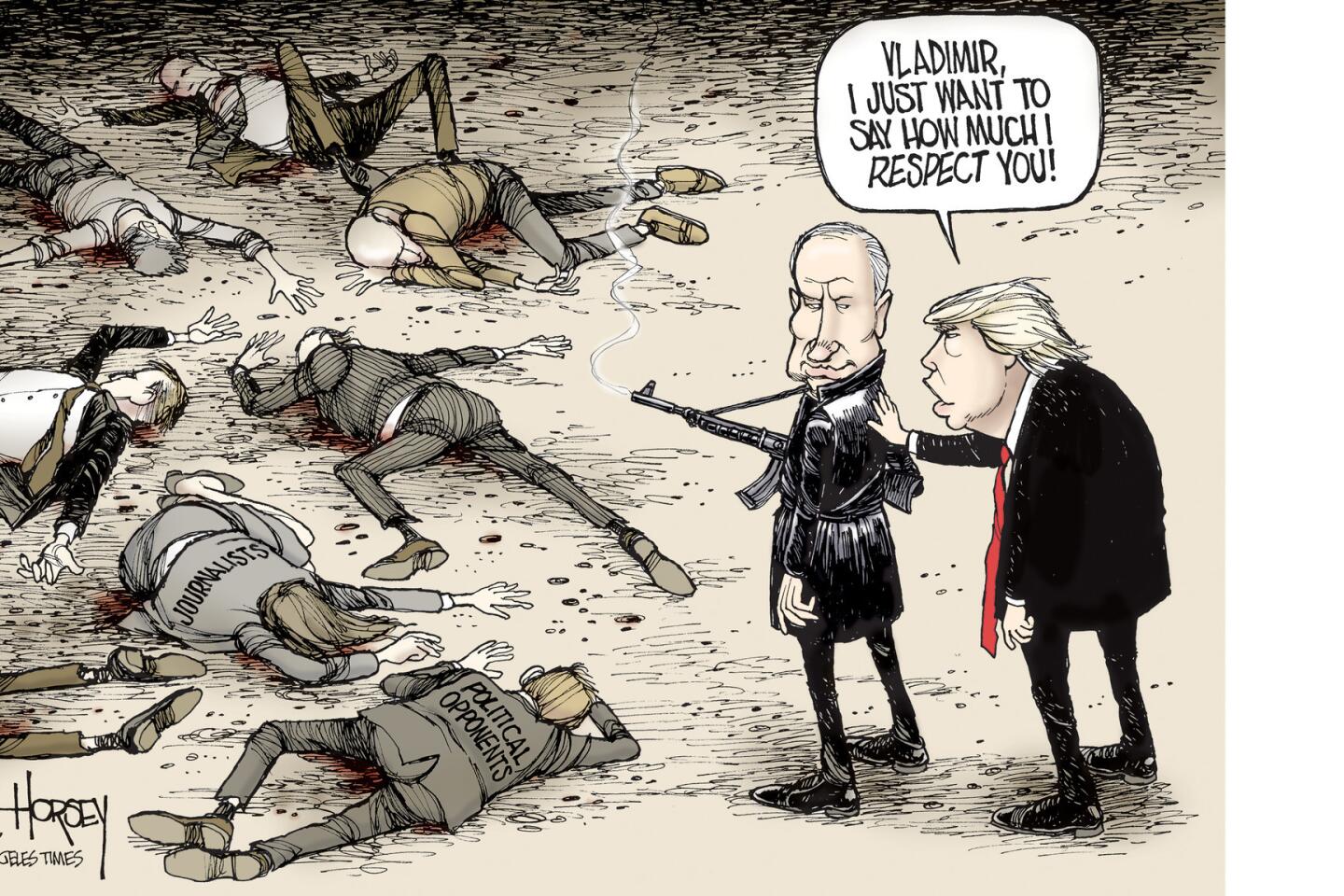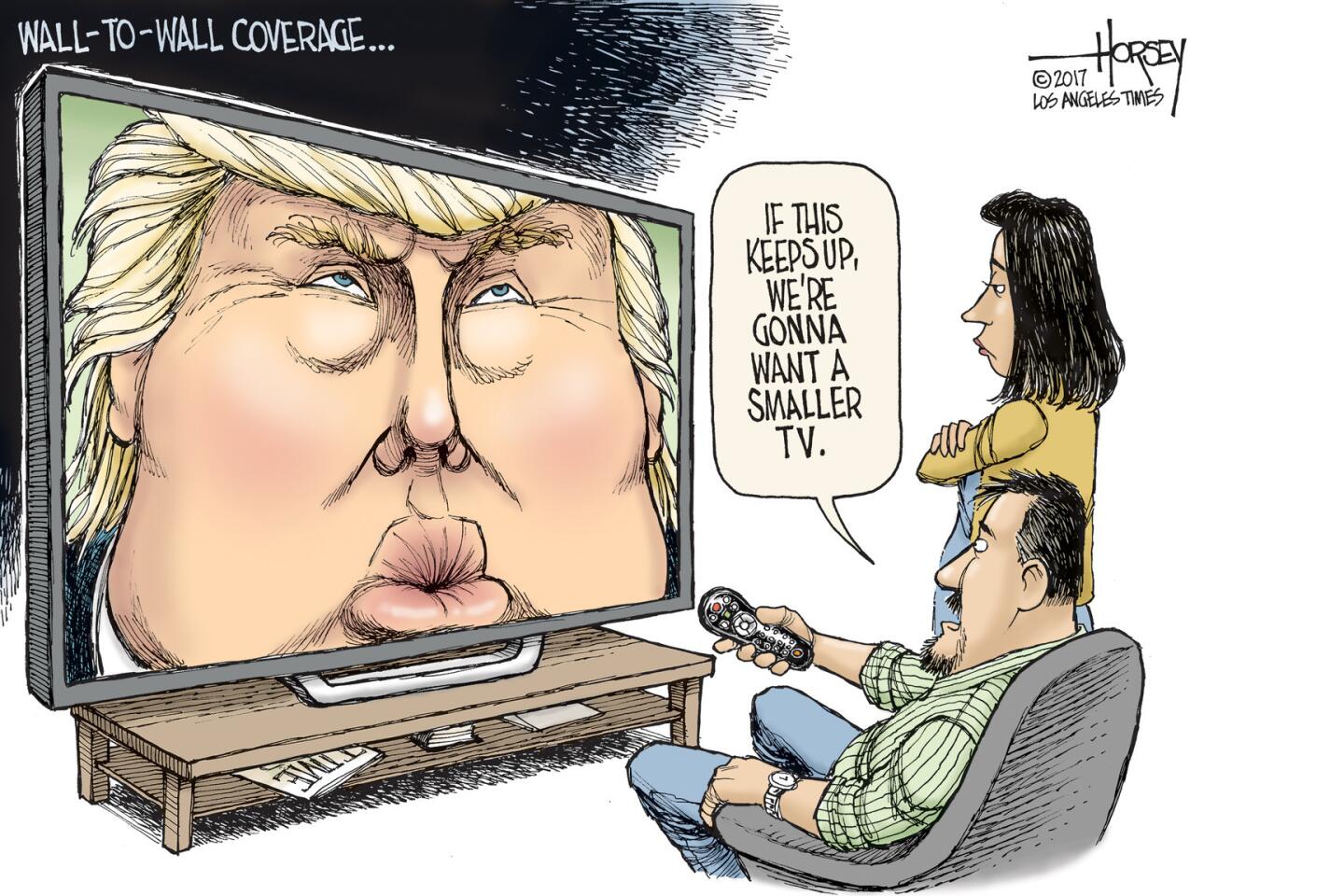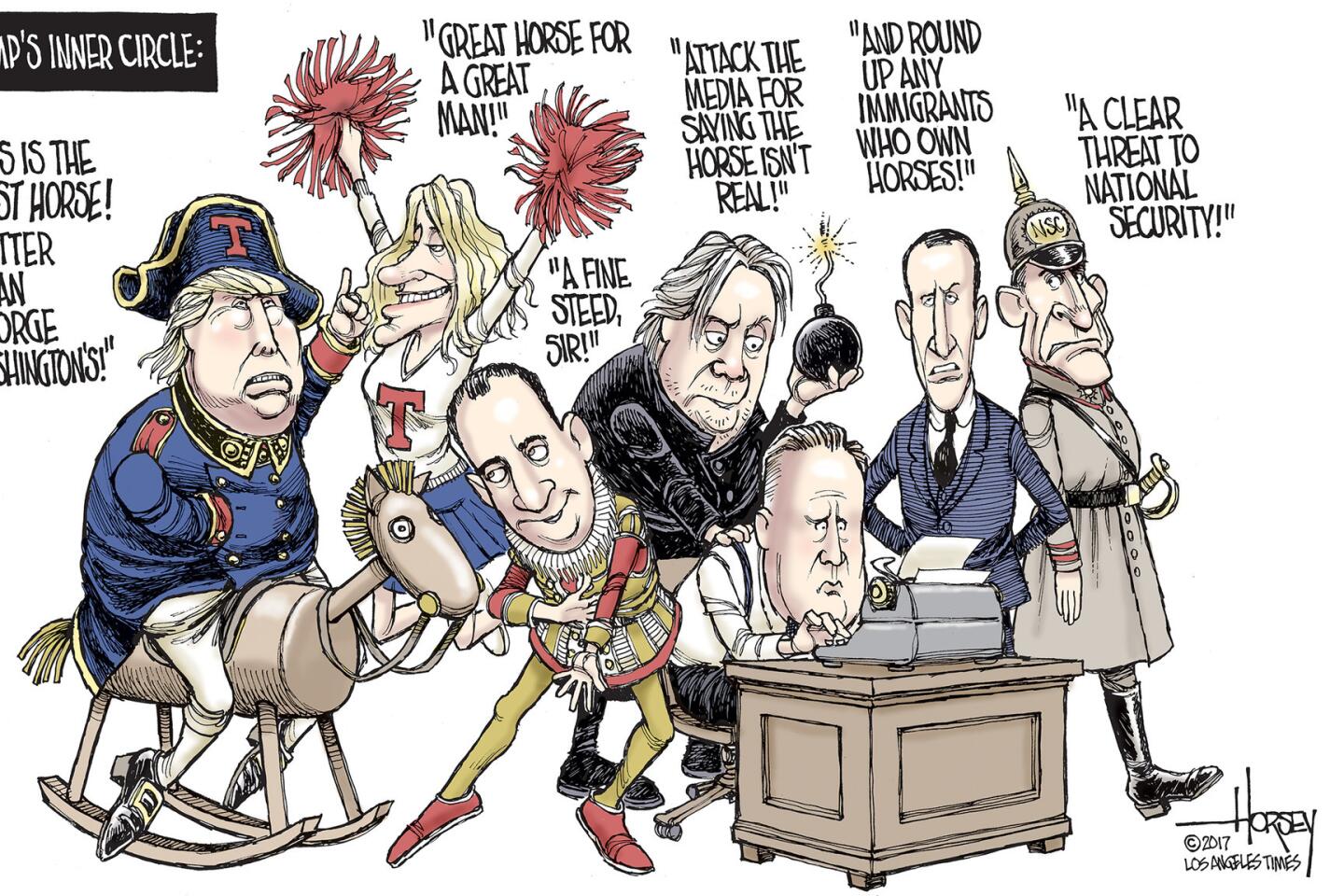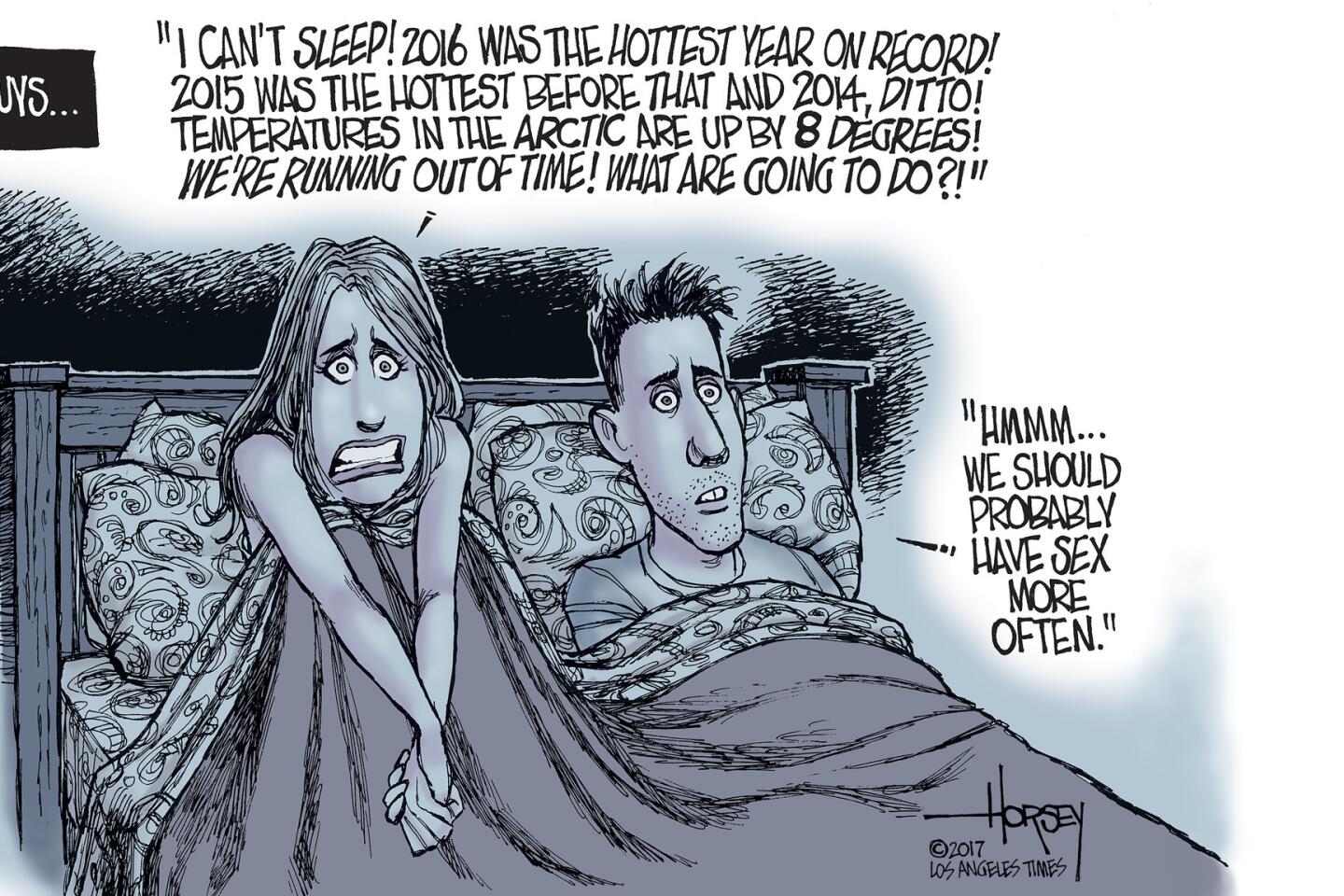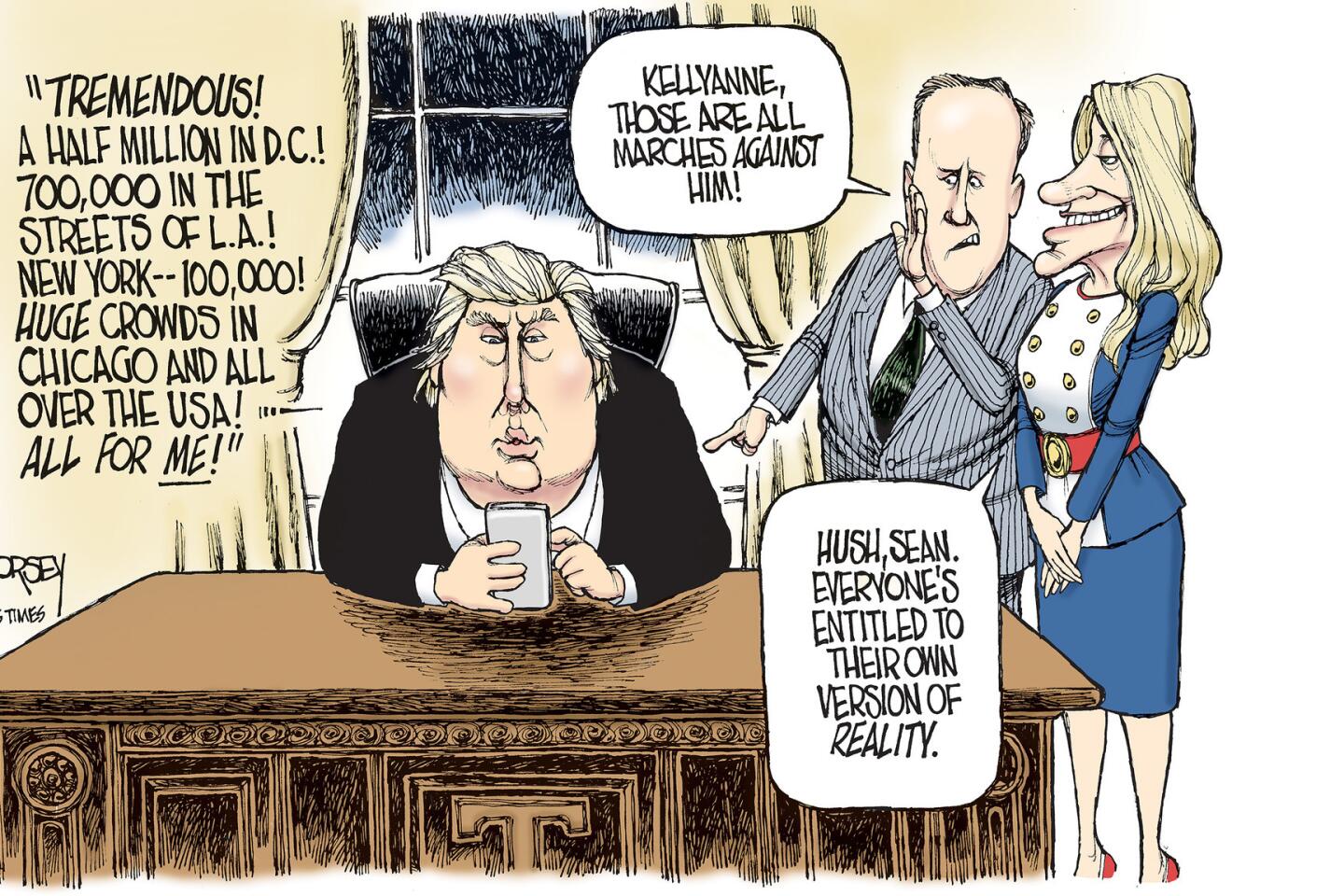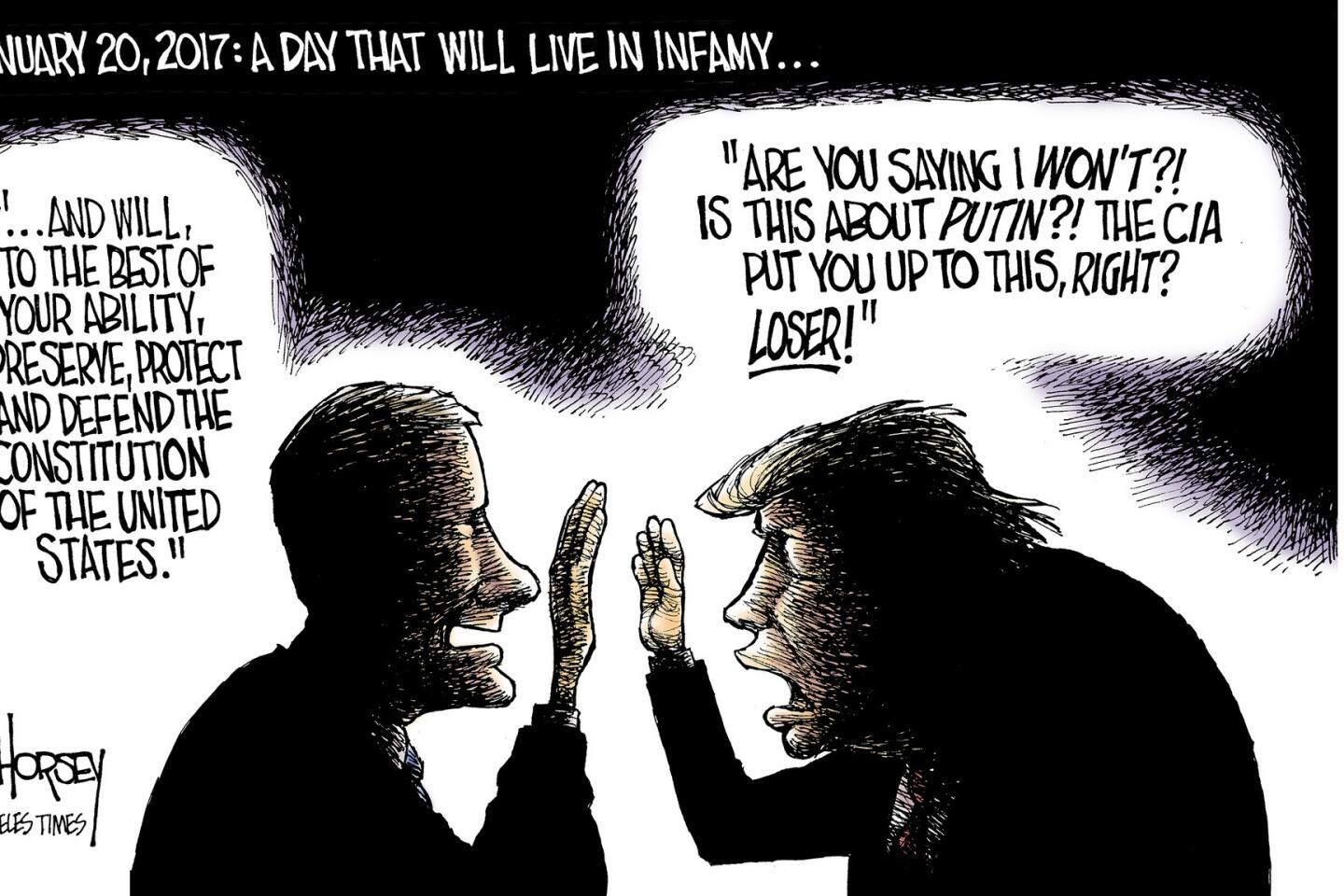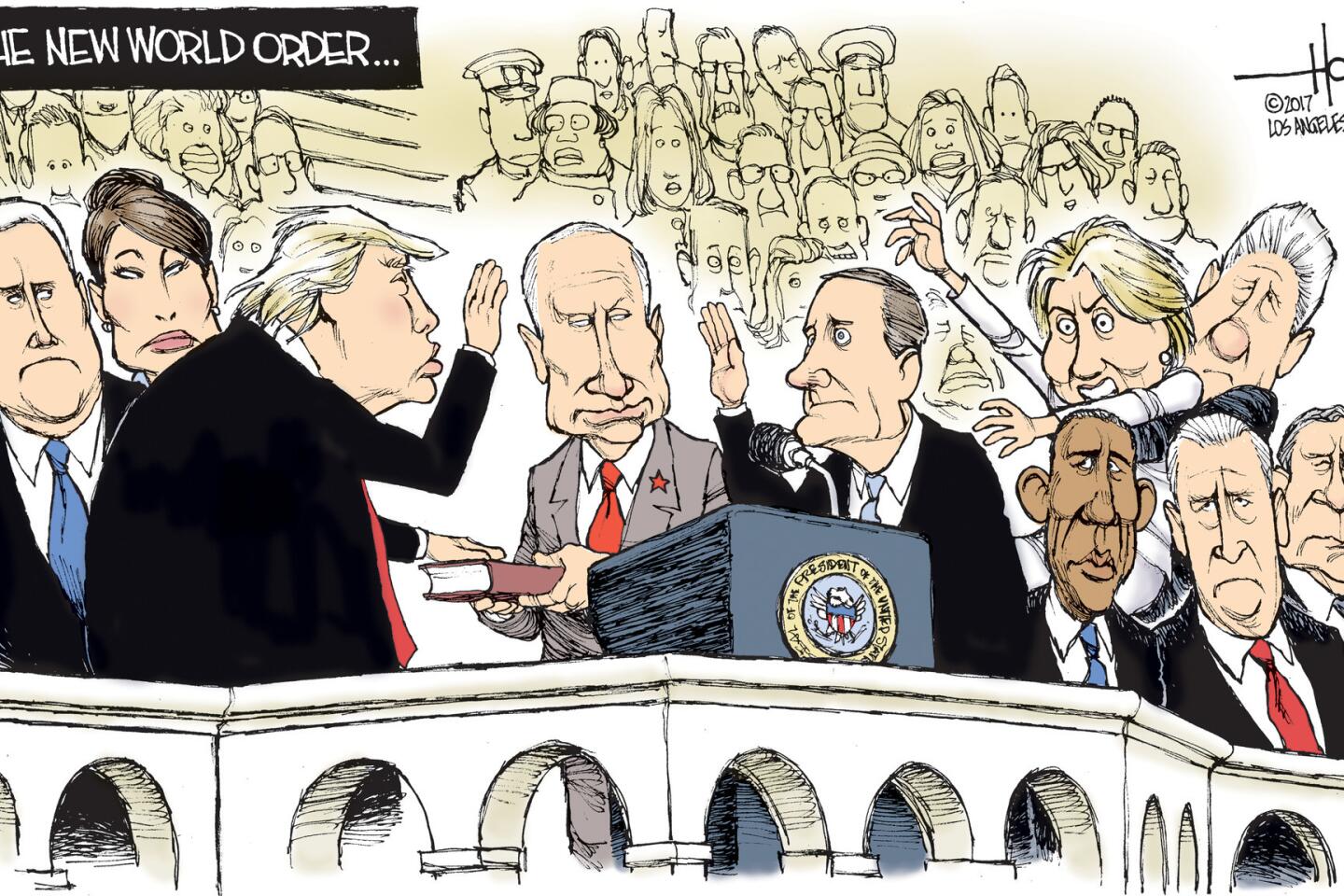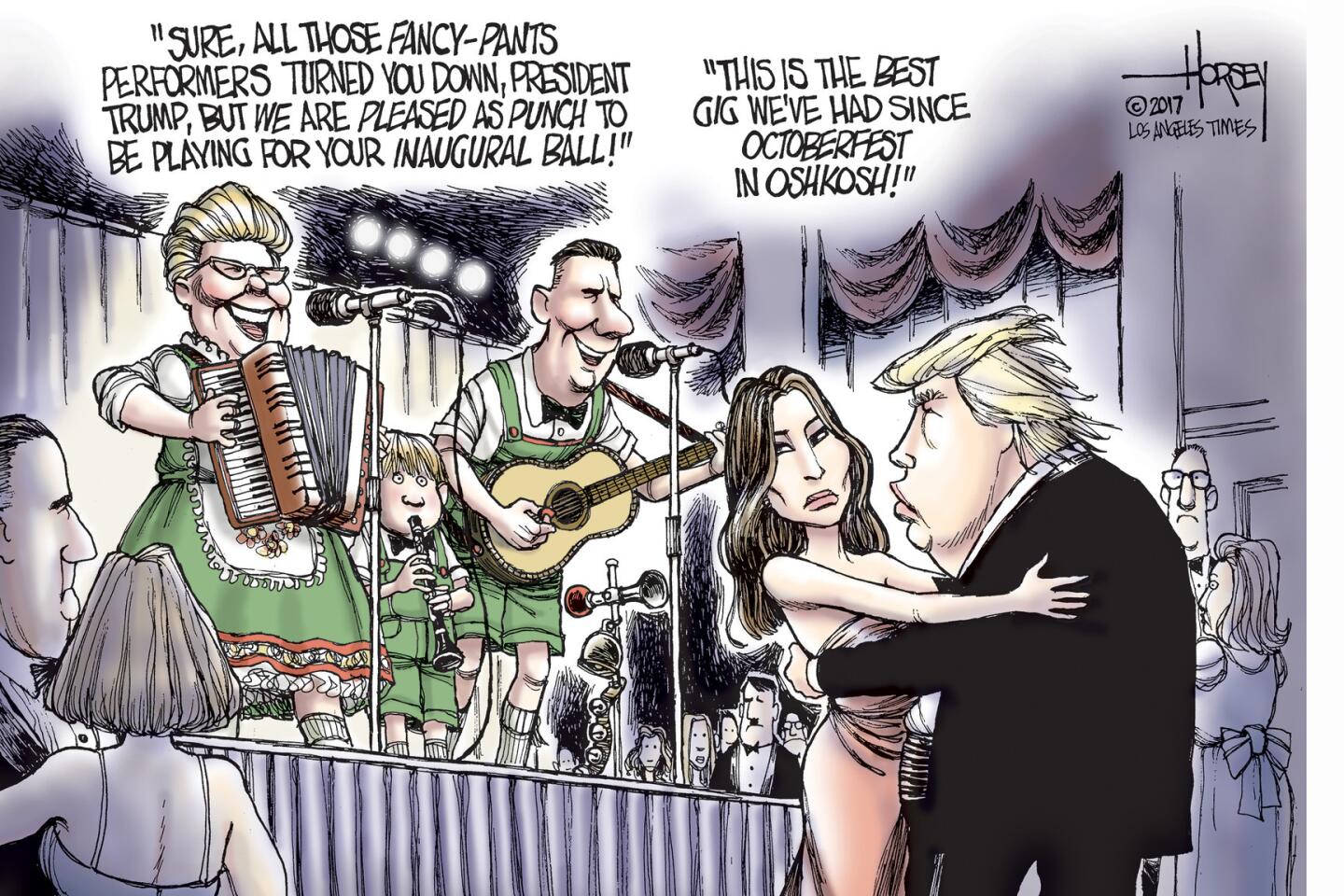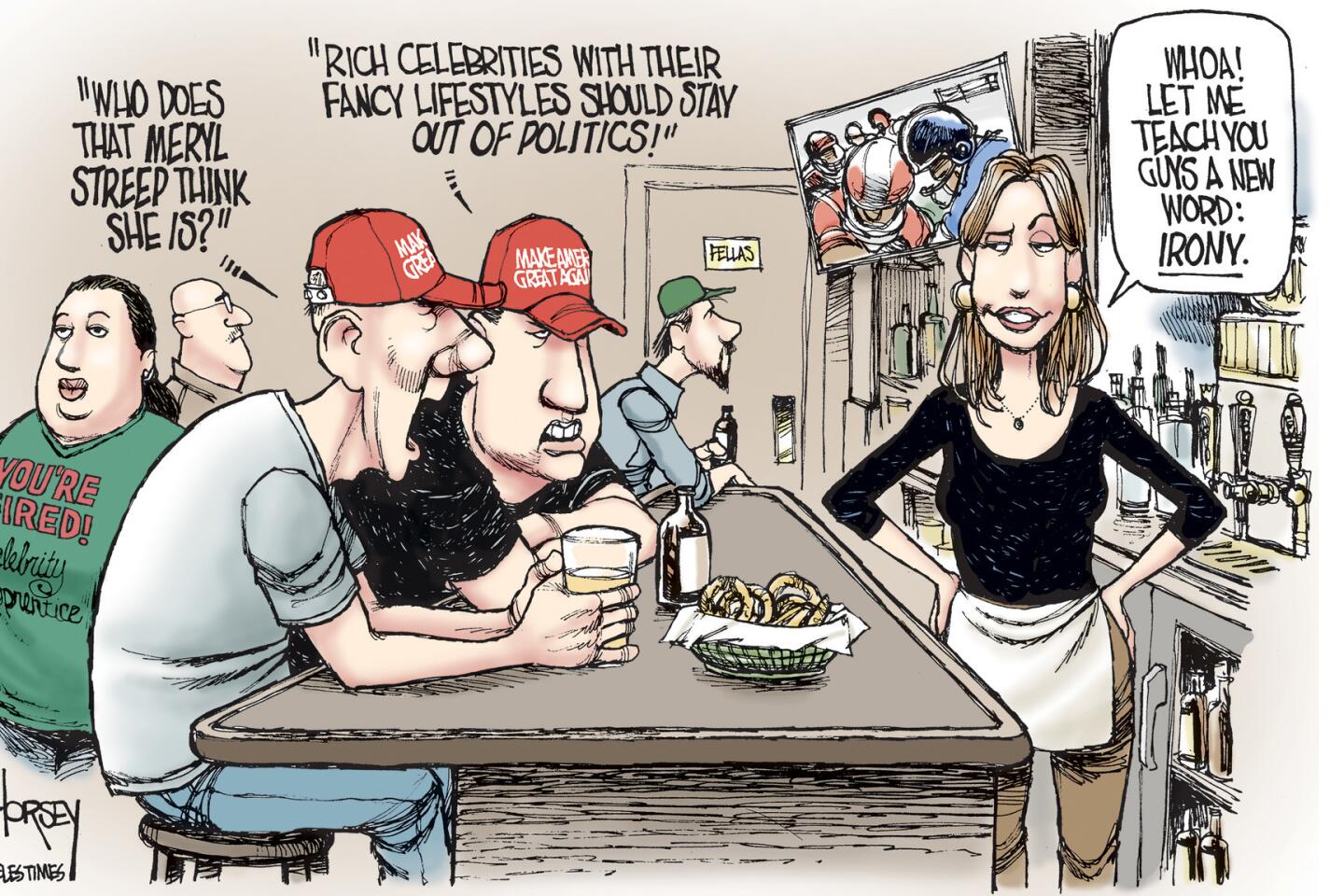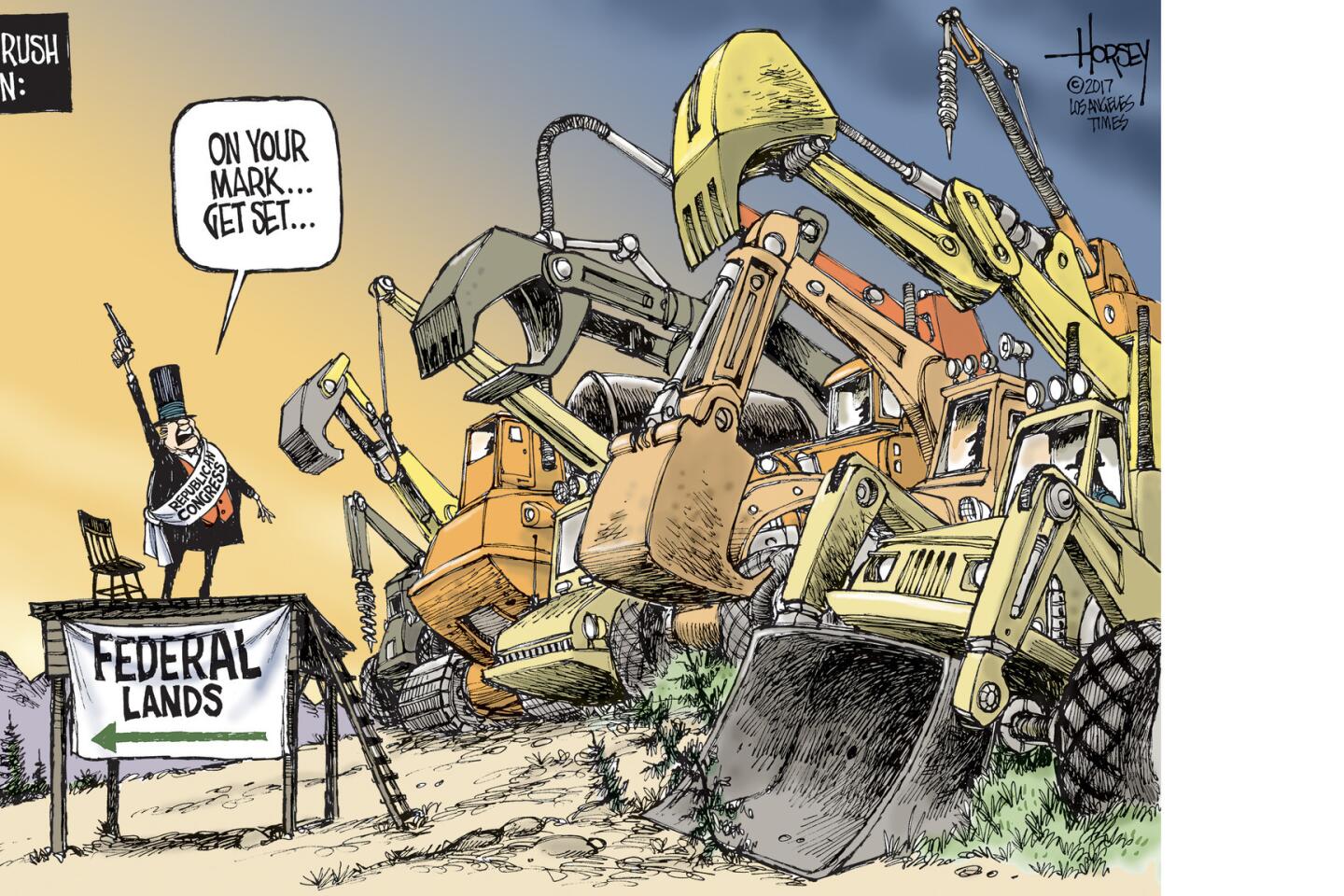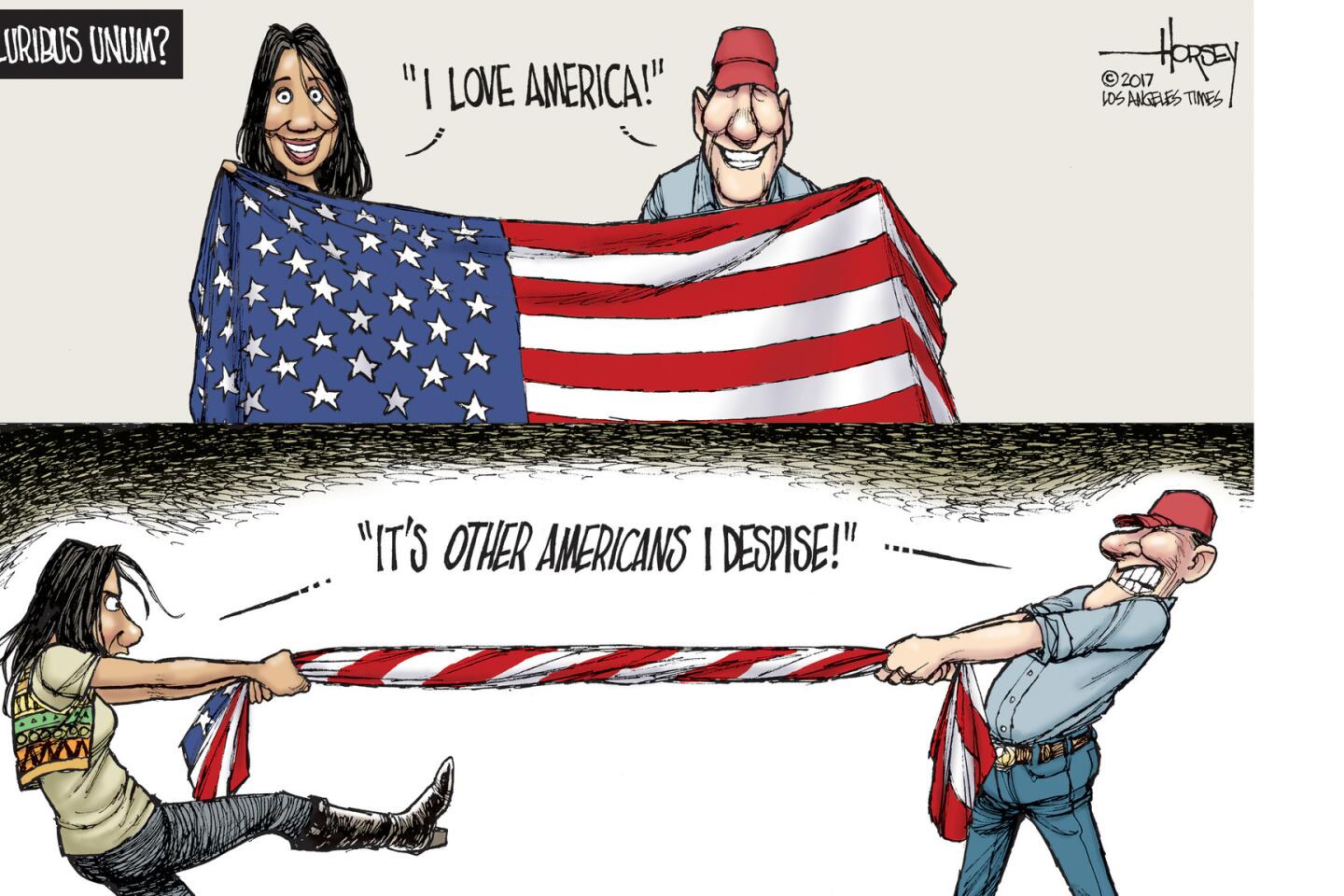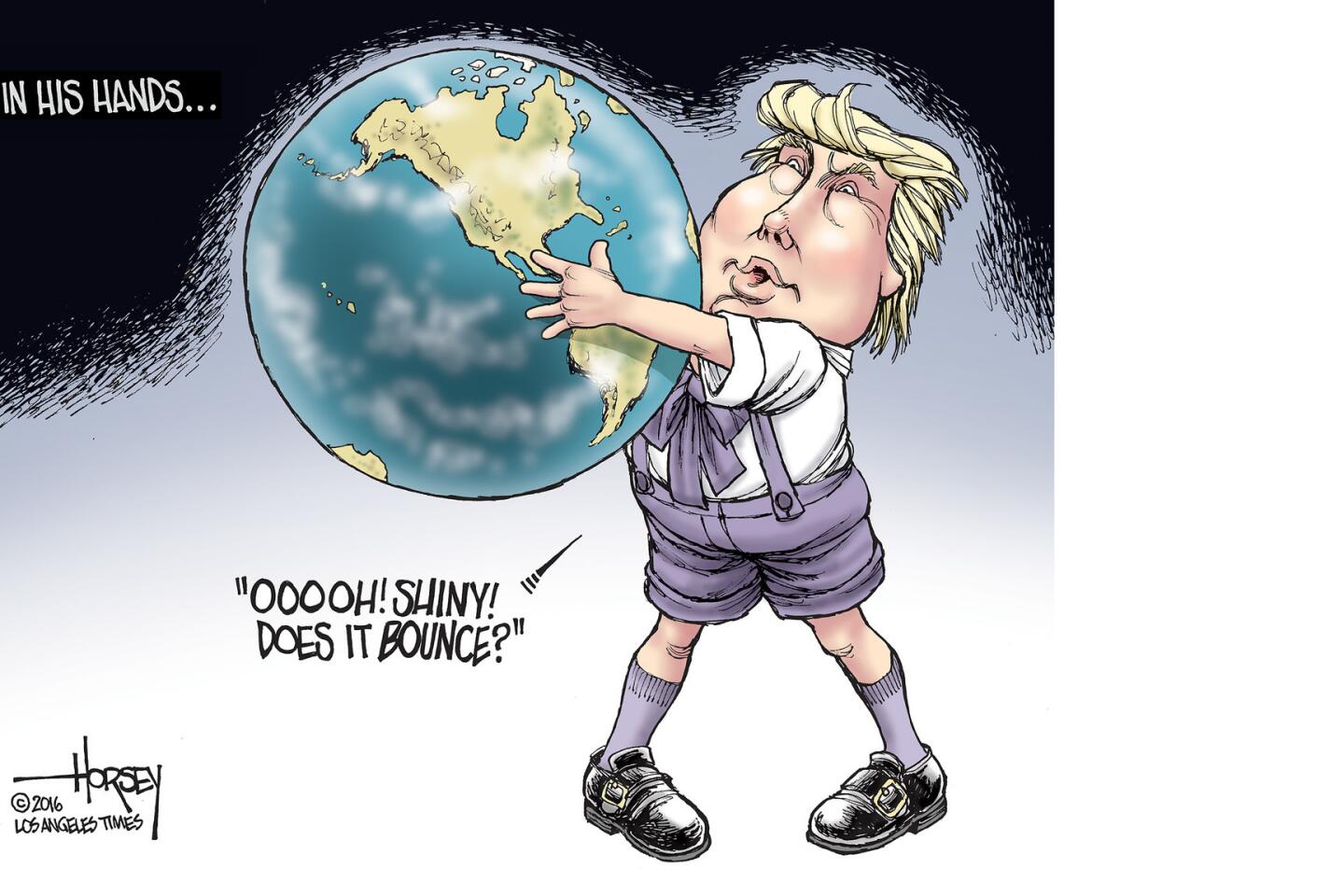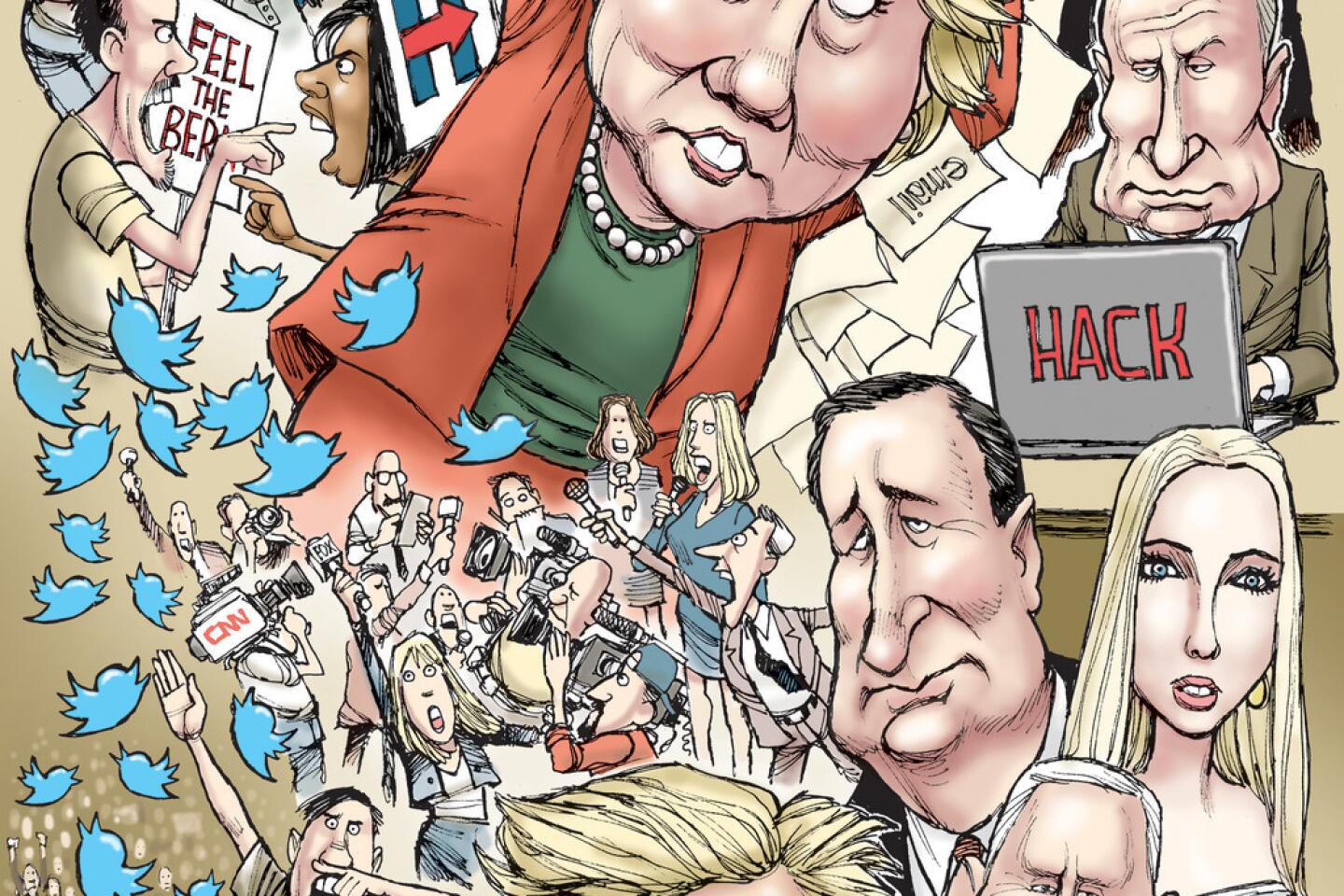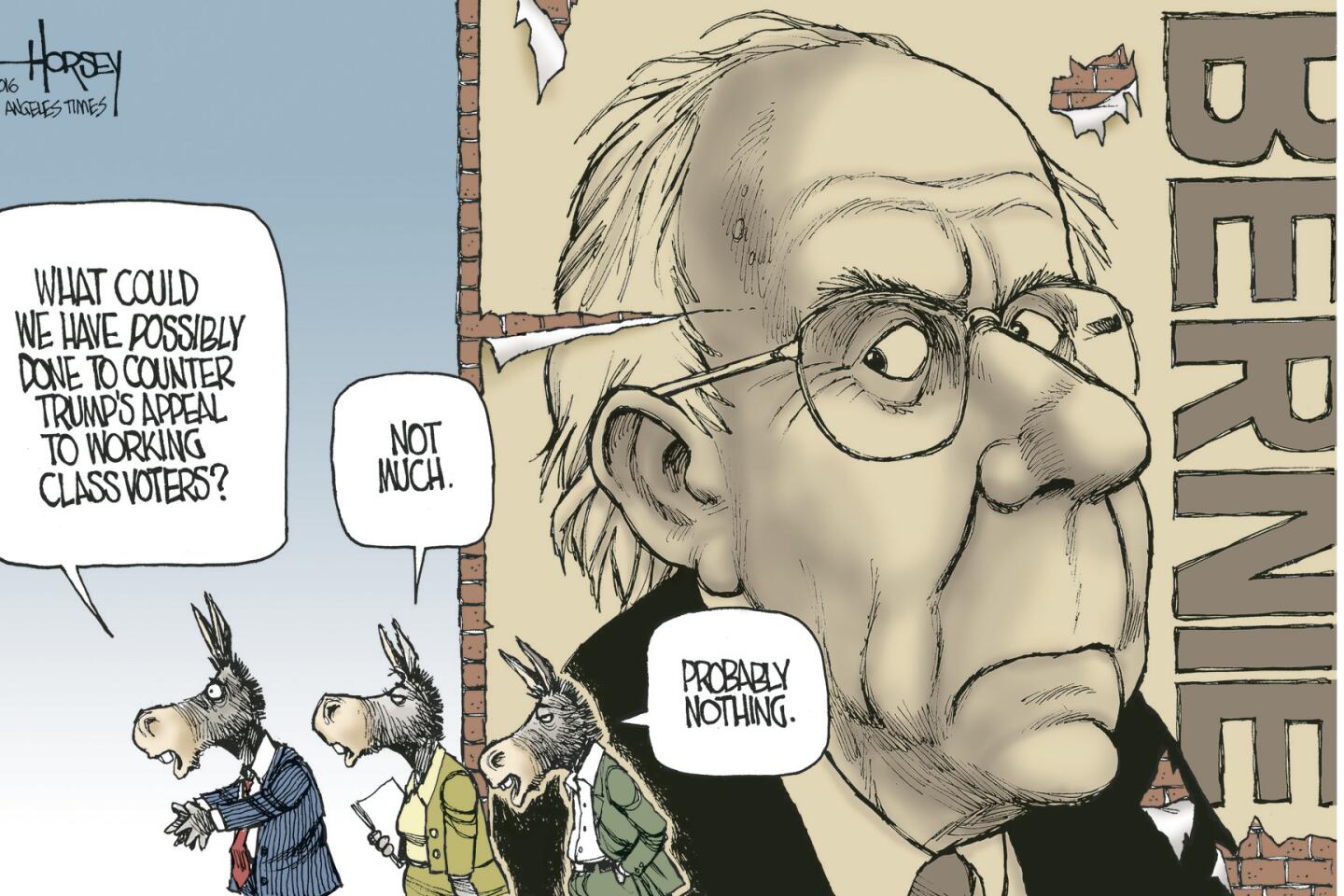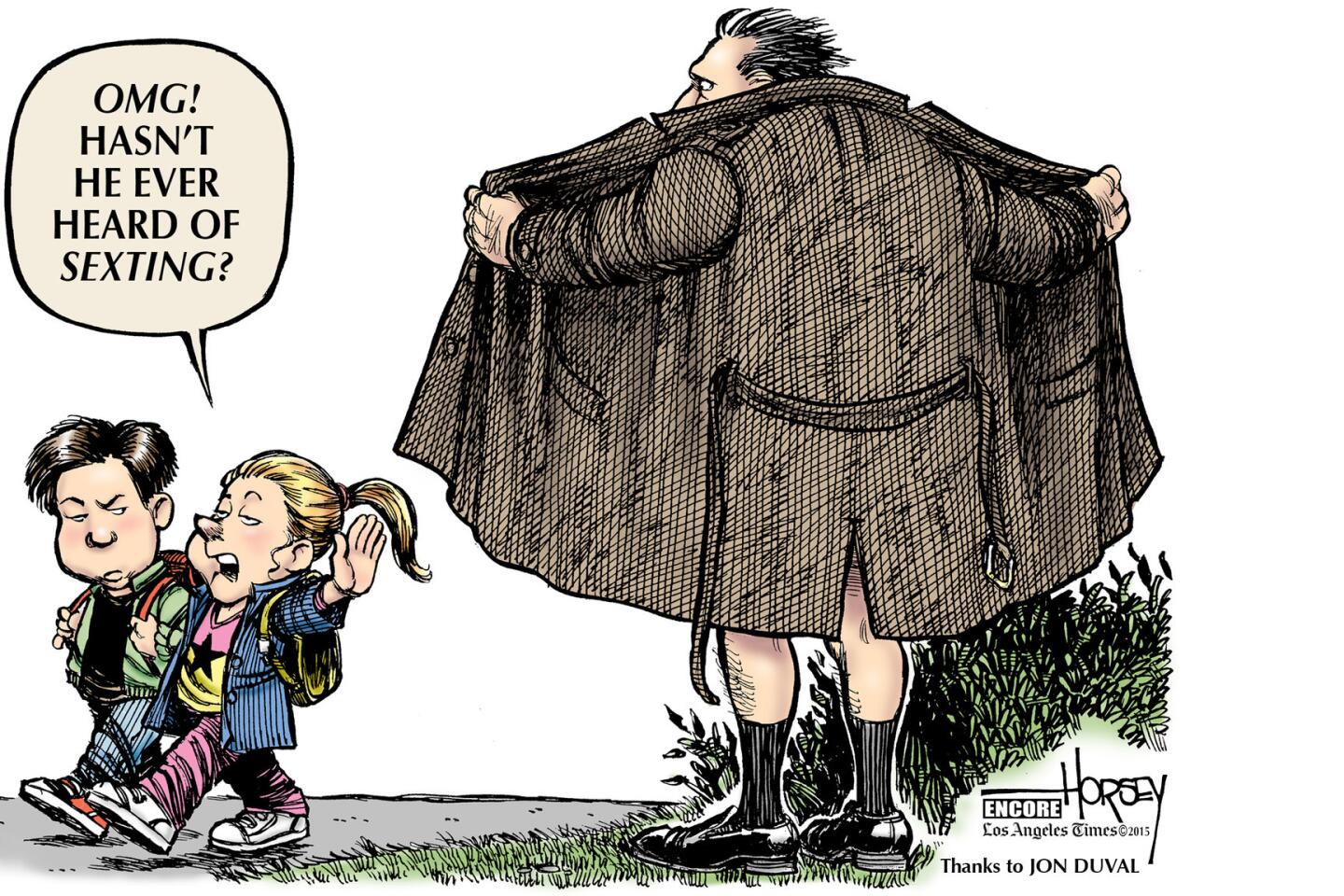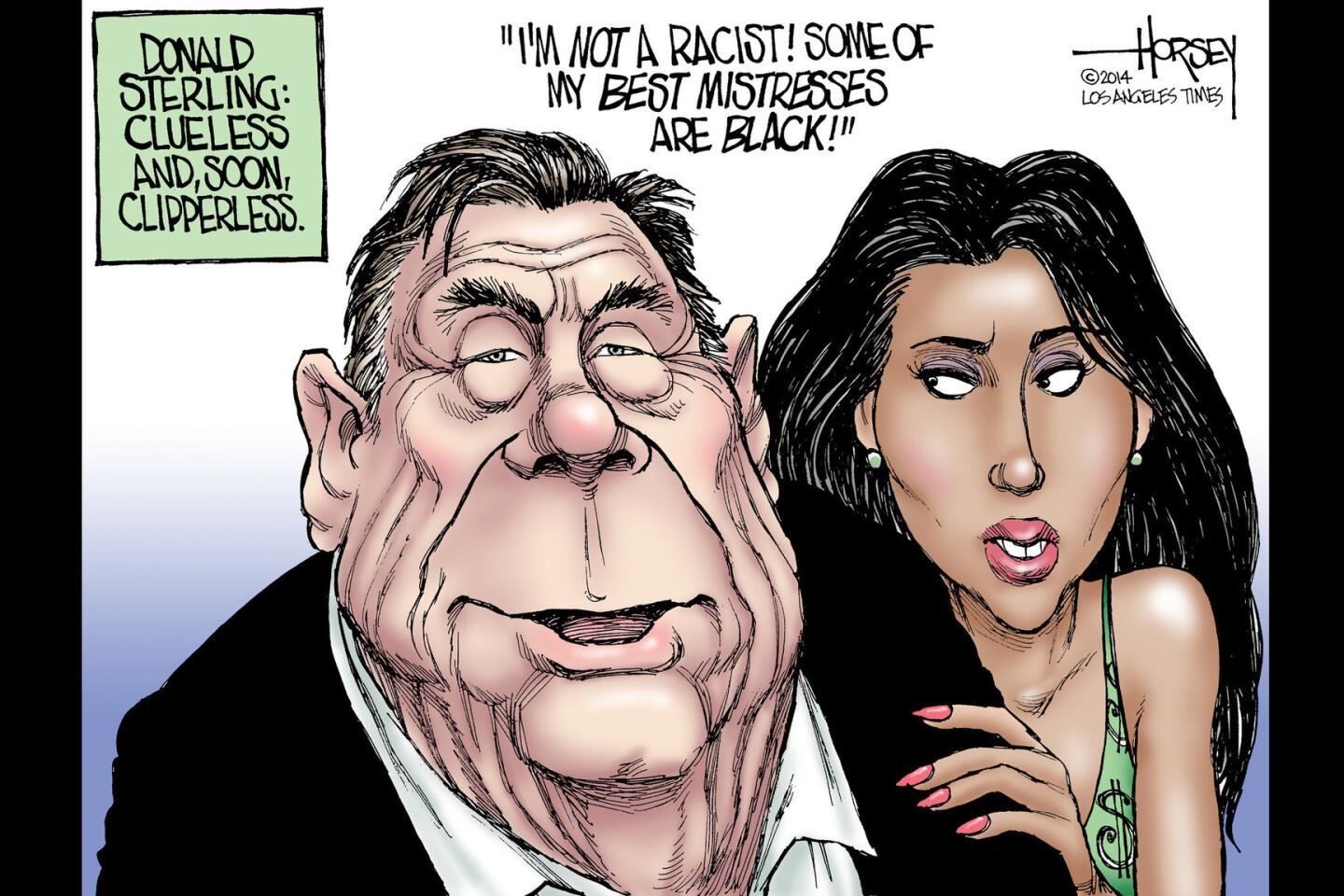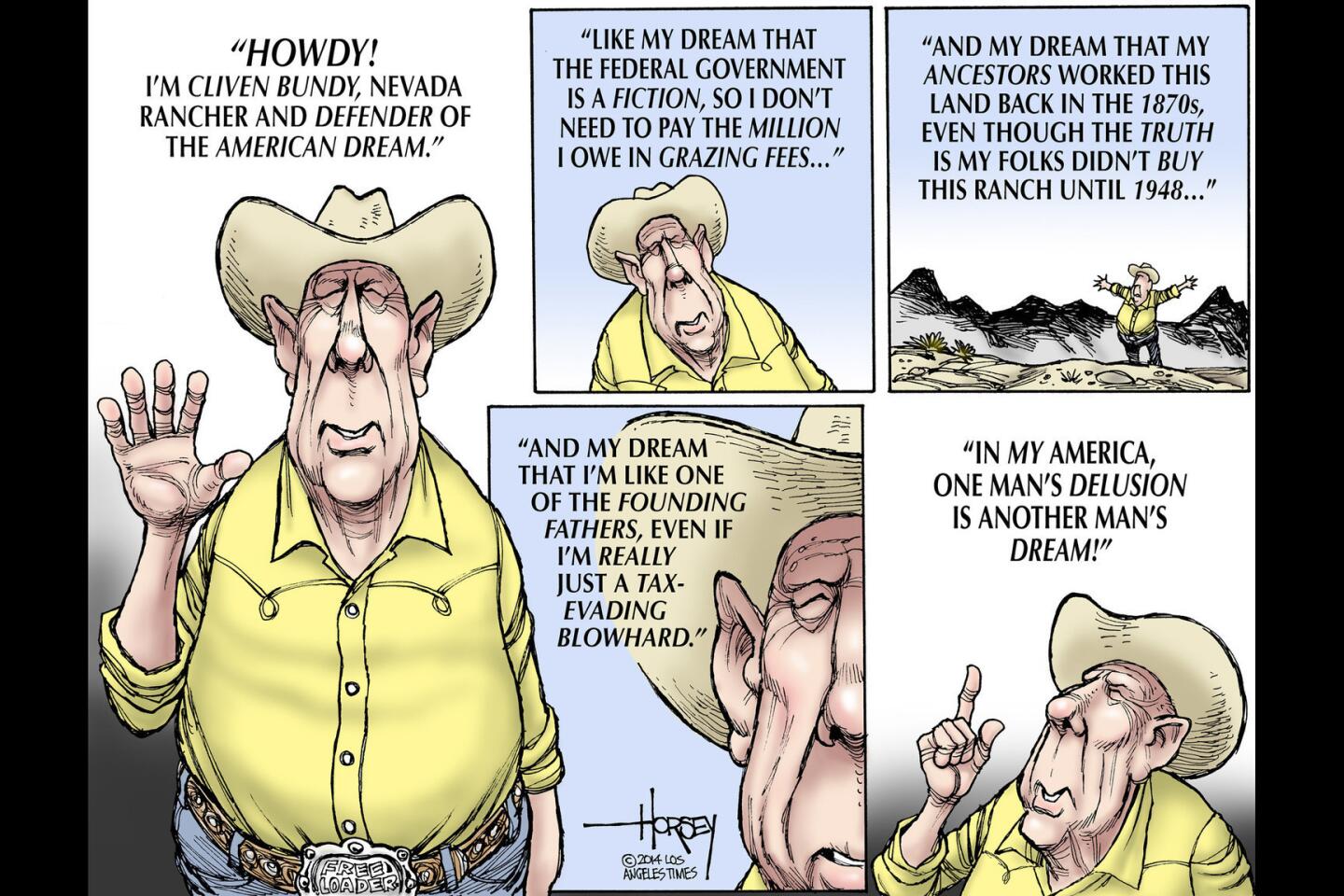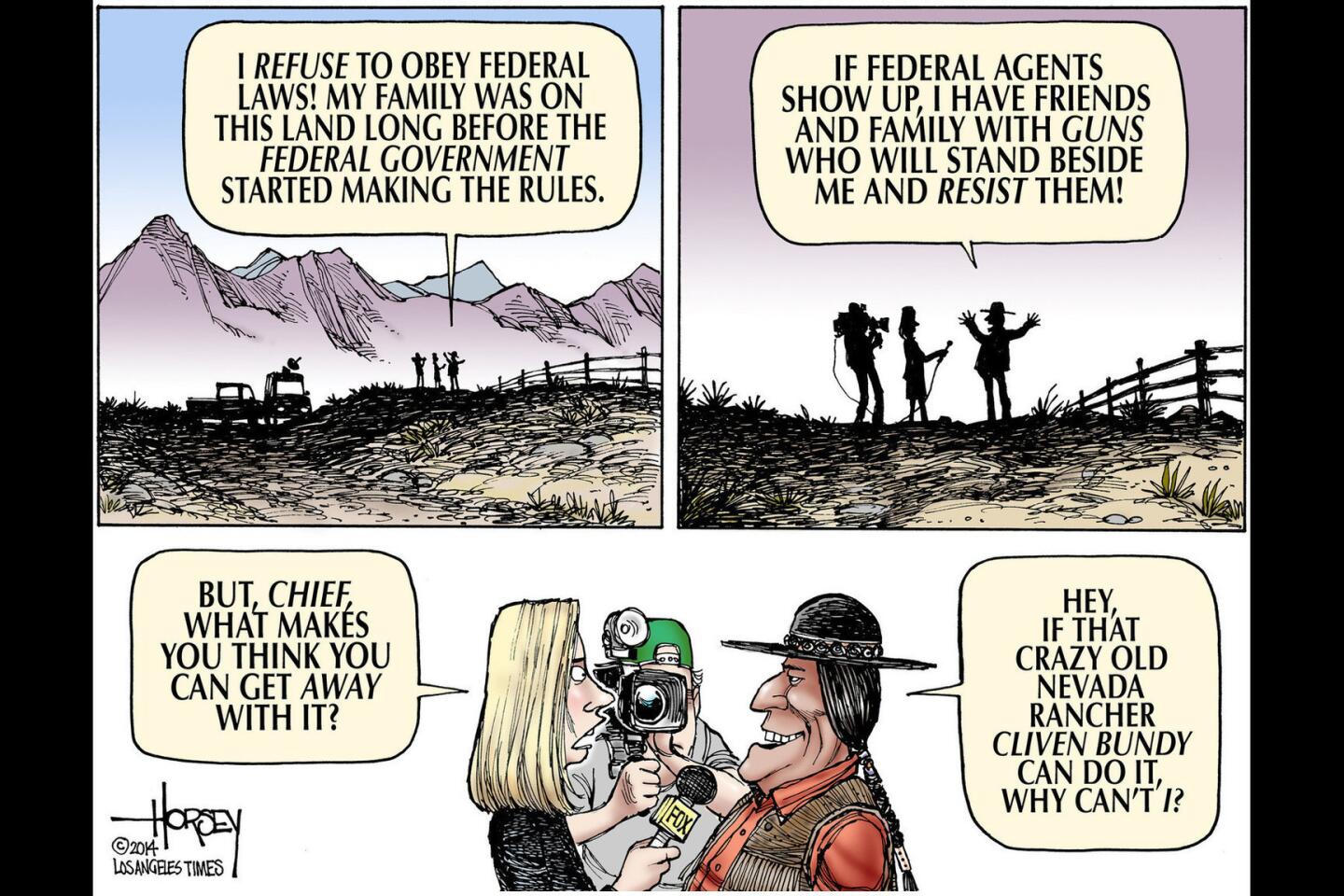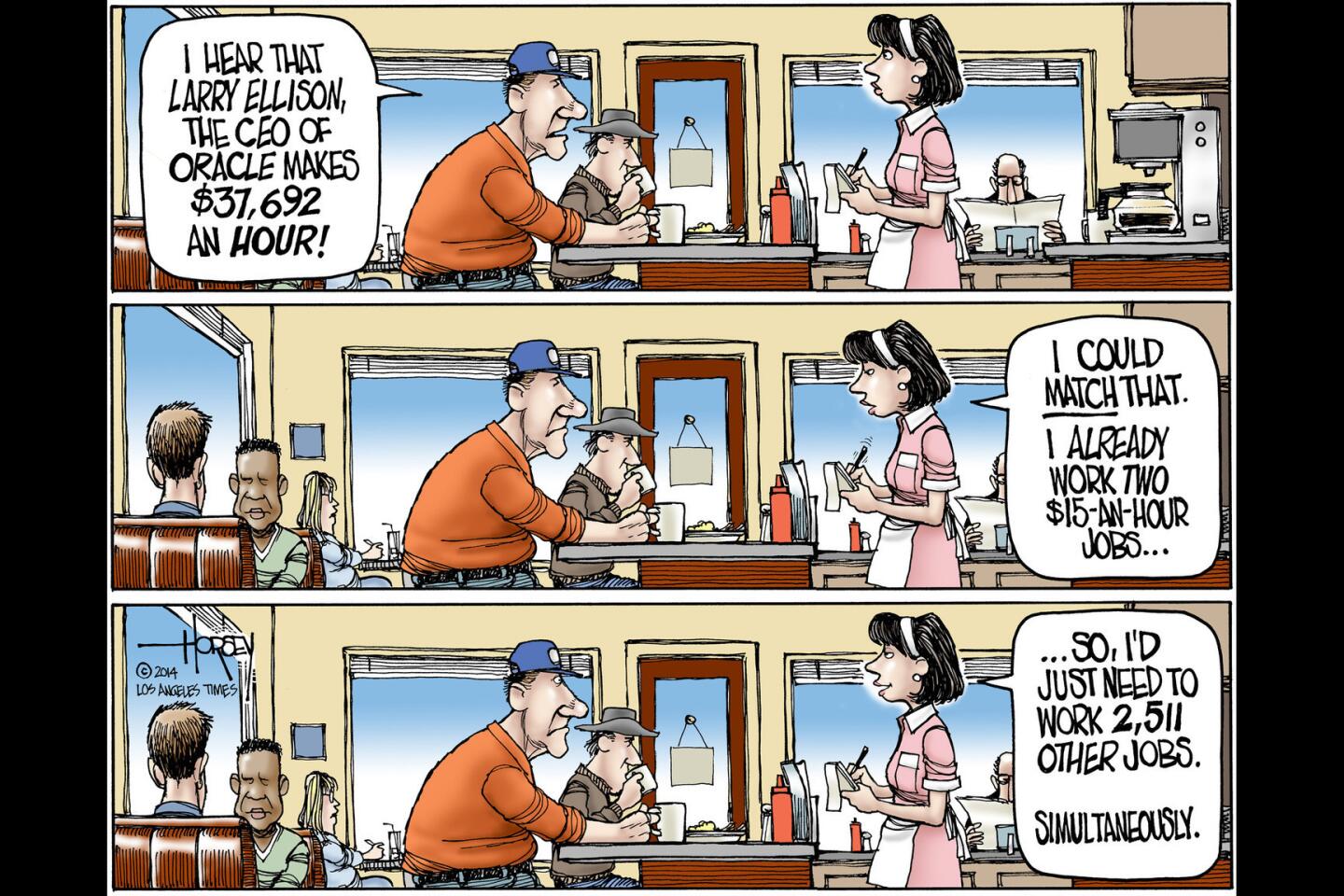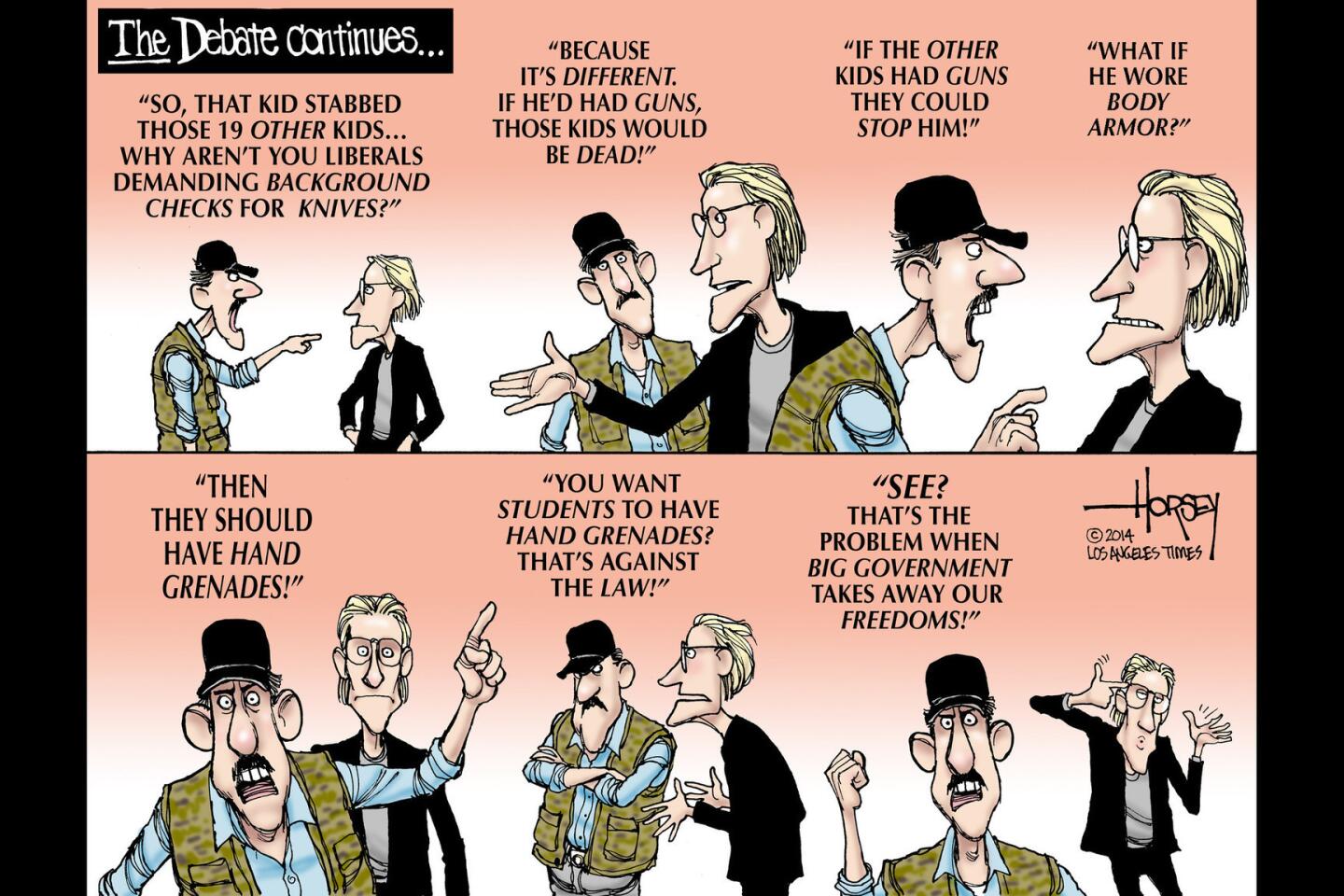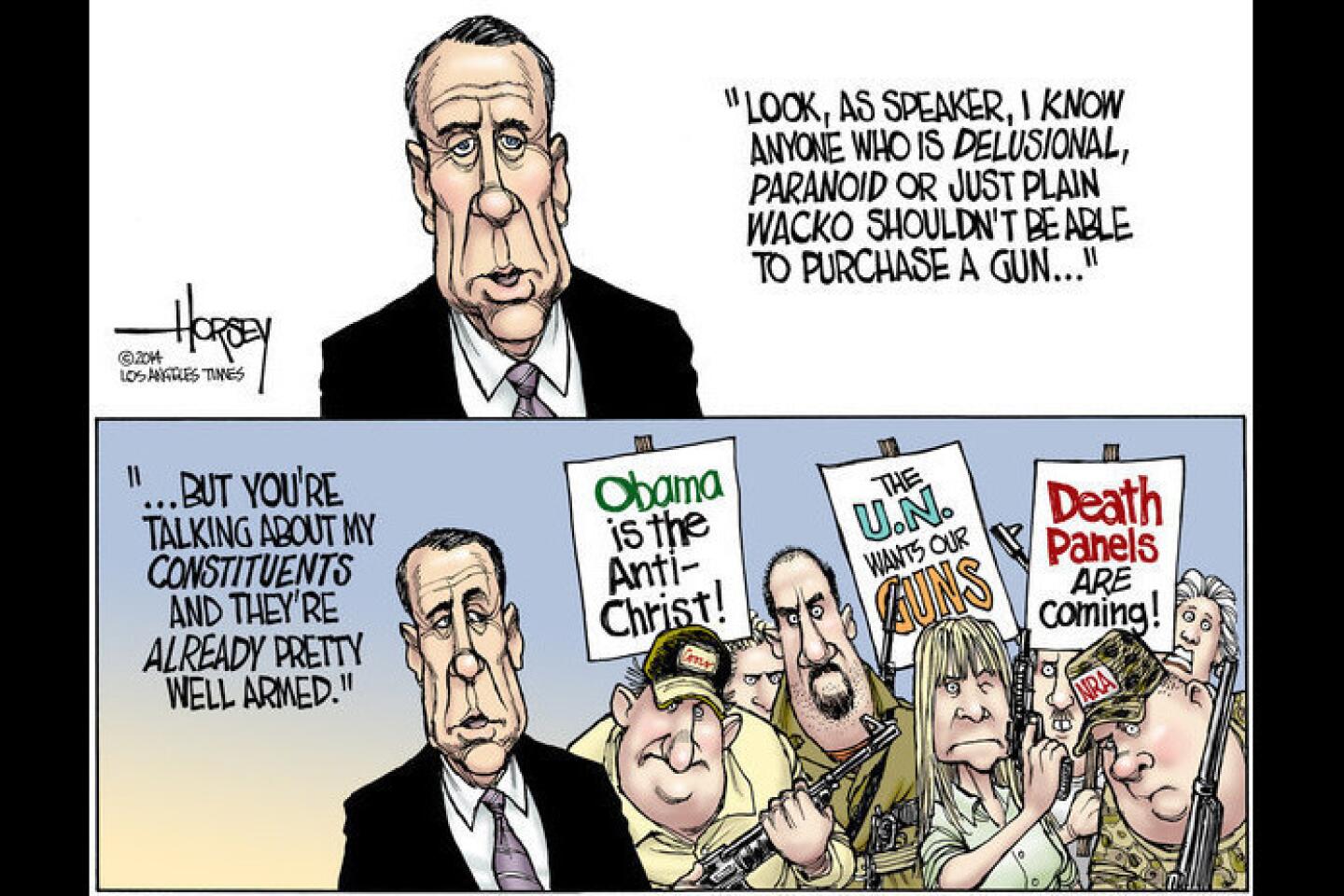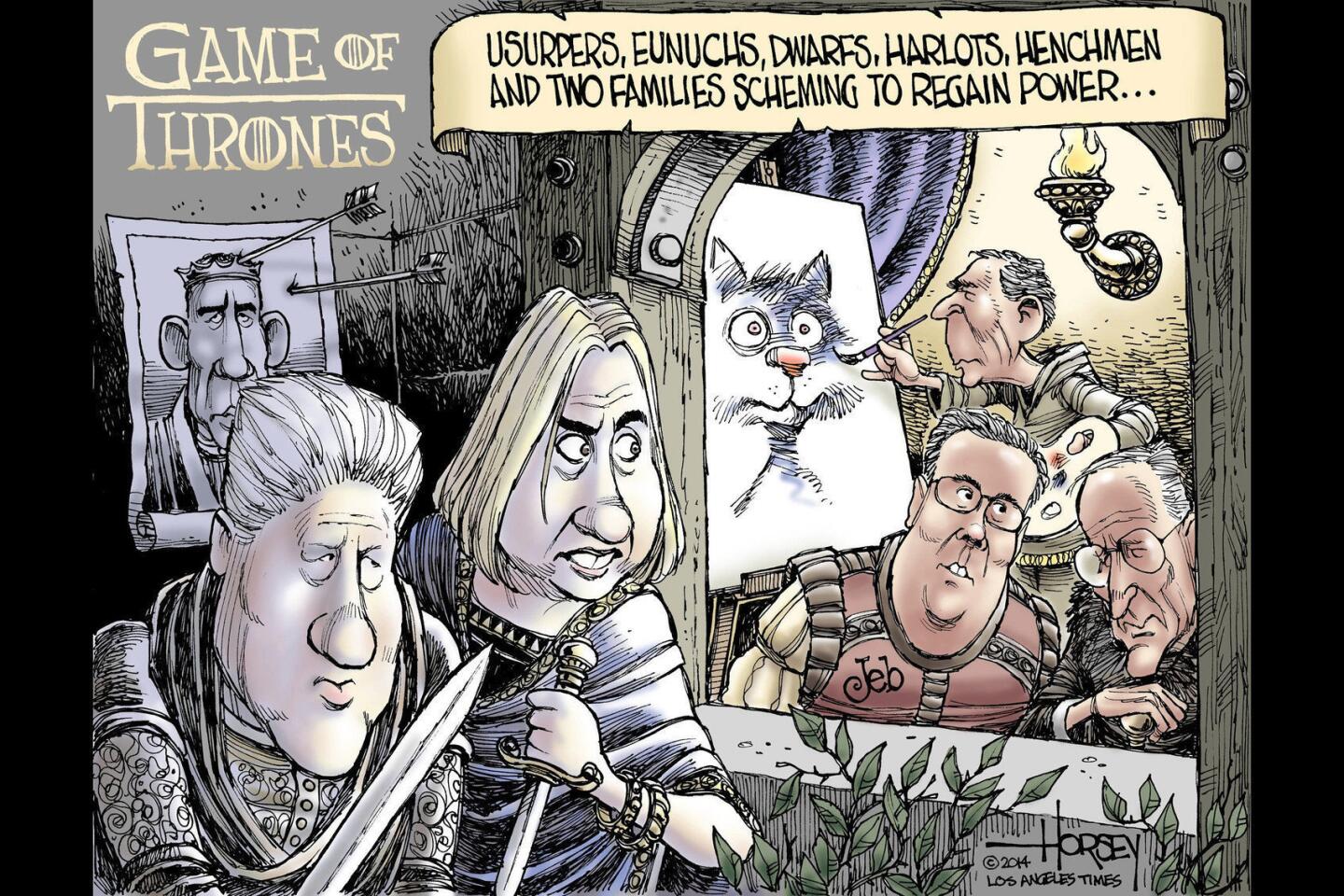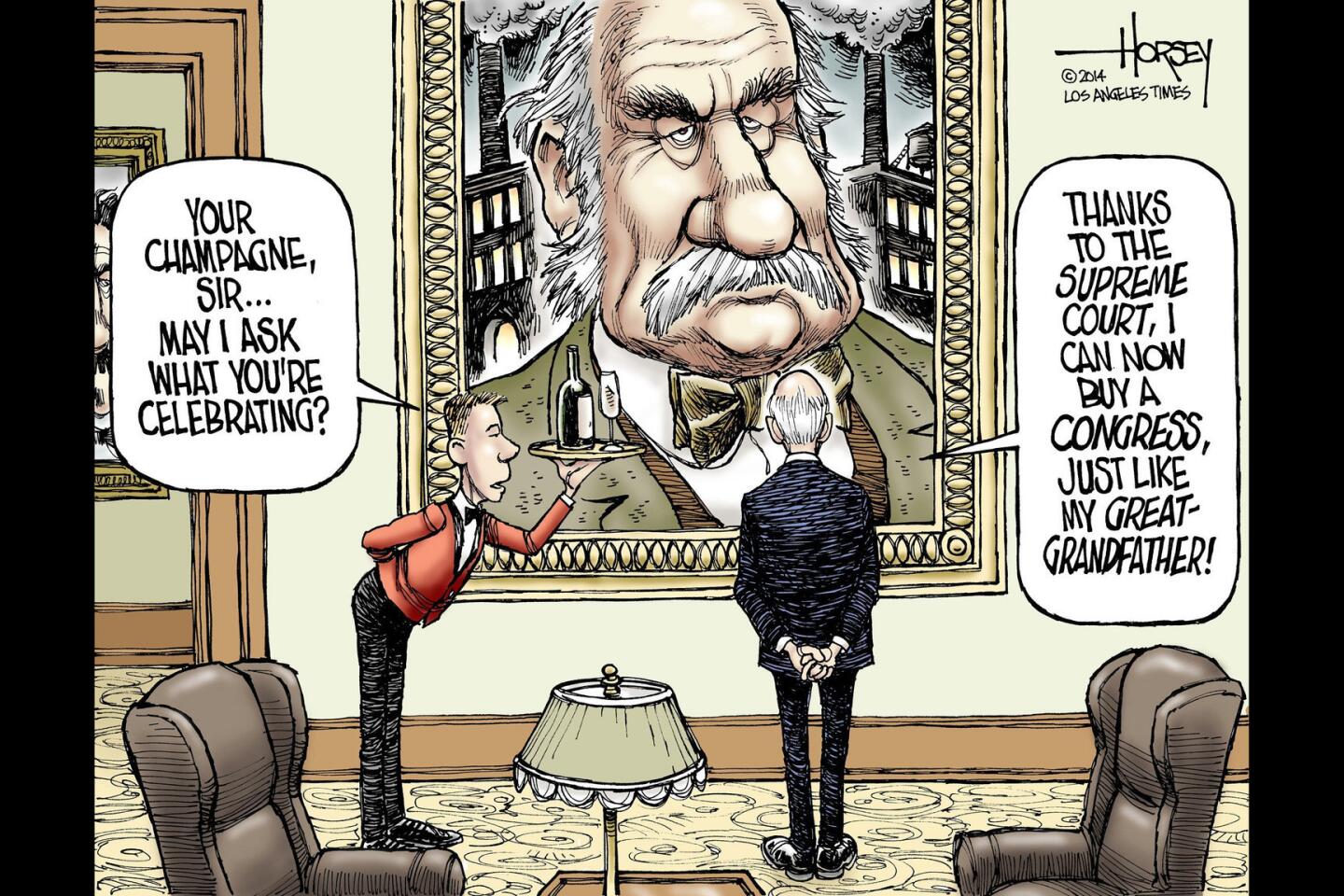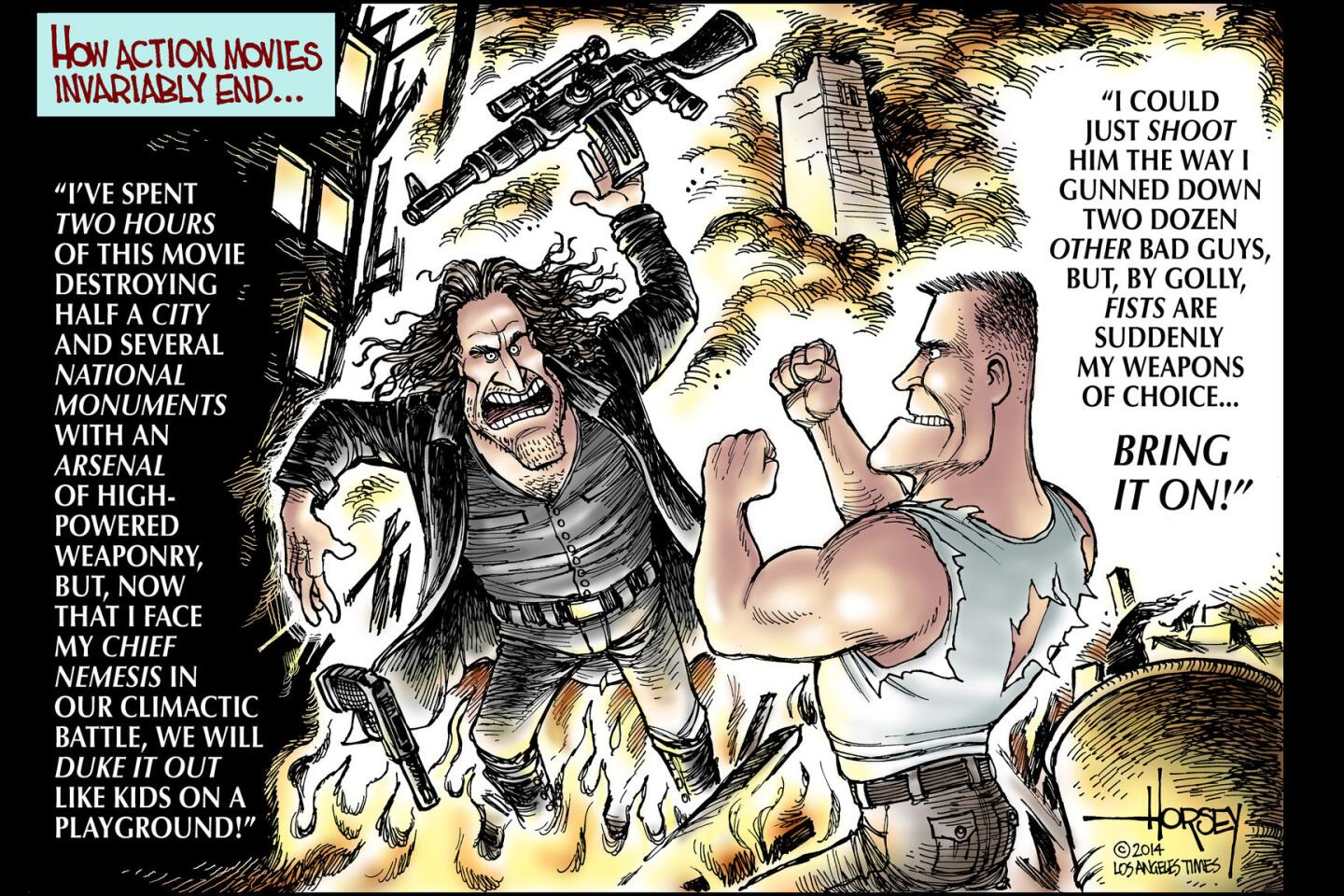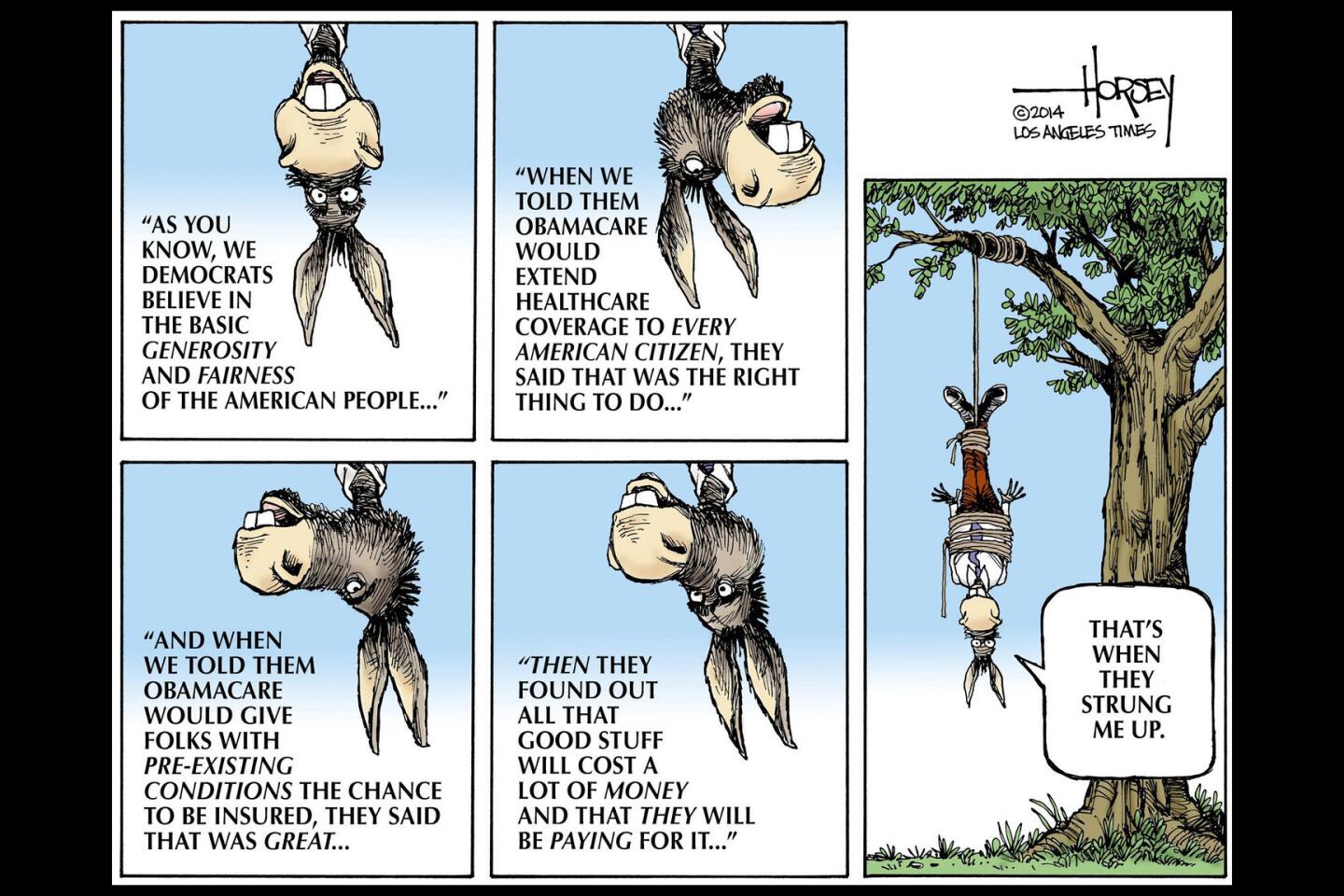Racist extremists, not ‘many sides,’ brought terror to Charlottesville
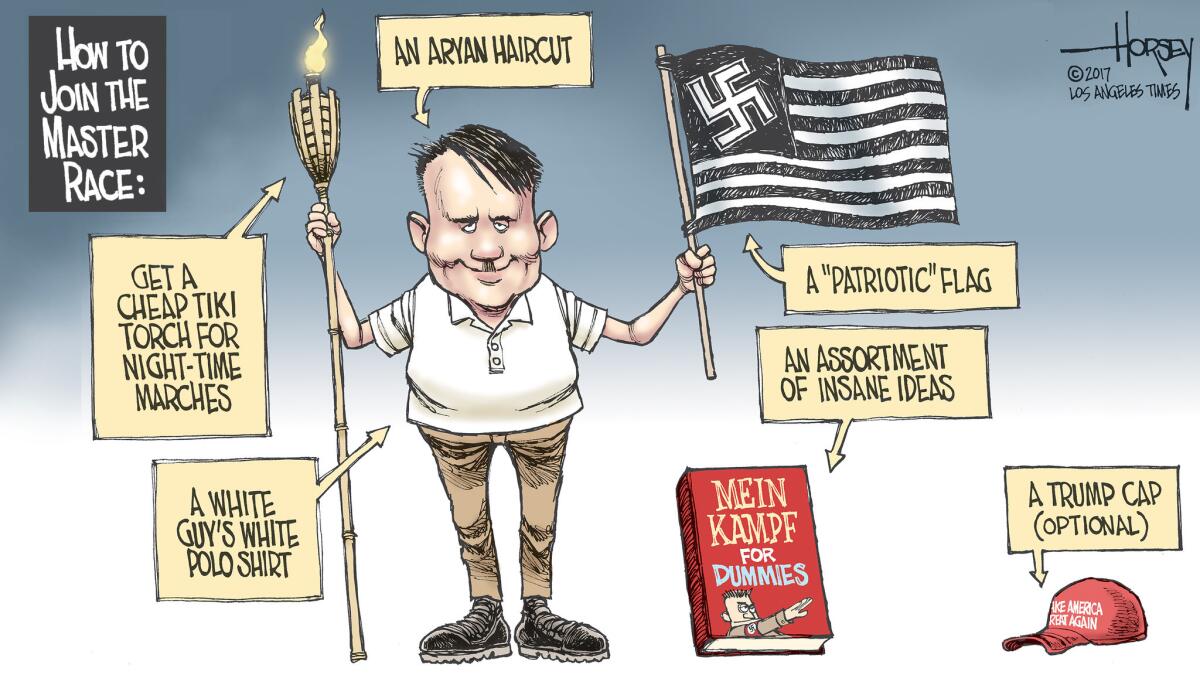
- Share via
“Racism is evil and those who cause violence in its name are criminals and thugs, including the KKK, neo-Nazis and white supremacists.”
Now, was that so hard to say? Apparently for Donald Trump it was, at least in his initial statement about the deadly confrontation between right-wing groups and counter-protesters in Charlottesville, Va., on Saturday. The president read the statement above from a teleprompter on Monday, but those words had an emphasis that was distinctly different from his first official, partly improvised reaction. In that, he condemned “this egregious display of hatred, bigotry and violence on many sides, on many sides.”
Exactly which were those “many sides” that he felt compelled to emphasize twice? On one side were the neo-Nazis, white supremacists and various other supporters of right-wing extremism. They had come by the hundreds to Charlottesville to rally against the removal of a statue of Confederate Gen. Robert E. Lee. Friday night, they marched through the campus of the University of Virginia carrying tiki torches that made them look as ludicrous as they were threatening. On Saturday, they rallied near the statue, armed for battle, waving Confederate and Nazi flags and pro-Trump signs, eager to assert their belief that the United States should be a whites-only nation with no room for Jews, blacks, Latinos or anyone else who does not fit into their definition of a Europe-rooted superior race.
On the other side there were clergy, civil rights supporters, students and Black Lives Matter activists. Were they one of the “many sides” that the president believes displayed hatred, bigotry and violence?
To be sure, scattered among the counter-protesters was a cadre of young anarchists, the type who have fouled up many peaceful marches for progressive causes, as well as self-proclaimed anti-fascist activists who came ready to rumble. Their penchant for physical confrontation deserves criticism, but their greatest fault is in providing a perfect foil for the right-wing extremists who desperately need someone to provoke so they can shed their feelings of impotence and pretend they are fighting for a great cause.
Yet, as misguided as the aggressive tactics of the anti-fascists may be, ultimately there was just one side, not many sides, that showed up in Charlottesville to preach bigotry and other sick ideas that should have been left behind in the last century. That side is filled with losers, loons and oddballs with an ignorant, distorted understanding of history, but that does not mean they are insignificant. Just as the Internet has provided a convenient means of recruitment and indoctrination for terrorist groups like Islamic State, so, too, has social media opened a welcoming space for right-wing crackpots to find each other, organize, spread propaganda and magnify their power beyond their small numbers.
And there is no question that they are dangerous. One militant right-winger, Timothy McVeigh, blew up the federal building in Oklahoma City in 1995, killing 168 innocent Americans and injuring 500 others. On Friday, a 23-year-old admirer of McVeigh named Jerry Drake Varnell was arrested in an FBI sting after he allegedly attempted to blow up an Oklahoma City bank as an expression of his hatred for the federal government. And, on Saturday, one of the participants in the so-called “Unite the Right” rally in Charlottesville, 20-year-old James Alex Fields Jr., was charged with driving a Dodge Charger into a group of counter-protesters, injuring a score of people and killing 32-year-old woman, Heather D. Heyer.
Such home-grown terrorism stretches back 150 years to the first anti-black depredations of the Ku Klux Klan following the defeat of the Confederacy. In recent years, that violence sharply diminished as overtly racist ideas were banished to a few dark and dank corners of the country, but it has never gone away. Now, the ideas that justified the terrorism are resurgent, enabled by the caustic, conspiracy-mongering rhetoric in conservative media and encouraged by the election of a president who the extremists believe is sympathetic to their concerns.
Trump has done a poor job of dissuading them from that perception.
If the president has any interest in learning what an eloquent response to Charlottesville sounds like, I recommend to him the statement issued by a friend of mine, Ana Mari Cauce, the president of the University of Washington. Forty years ago, her 25-year-old activist brother, Cesar Cauce, was killed in a confrontation with members of the KKK and the American Nazi Party in Greensboro, N.C.
“I recall a late-night conversation with my brother, in which he talked about ‘the struggle,’” Cauce said in her letter to the university community on Monday. “He did not view justice as an endpoint, or a goal with a clear finish line. Justice, he said, was a constant work in progress. You pushed the boulder up the hill, it would slide back, and you would have to push again. You needed to stay vigilant.
“We are at a time in our country’s history where we must put our shoulder to that boulder, for it is sliding back down with a momentum many of us thought was impossible in this day and age. We must recommit to equity and inclusion — for all. But even in our grief and anger, it is important to remember the words of Martin Luther King, ‘Darkness cannot drive out darkness, only light can do that. Hate cannot drive out hate, only love can do that.’”
At least this president — President Cauce — got it right the first time on Charlottesville.
Follow me at @davidhorsey on Twitter
MORE FROM OPINION
Readers React: The view from Charlottesville: Tear down the statue of Robert E. Lee — now
Why would Charlottesville racists do so much to protect a Robert E. Lee statue?
Trump’s first response to Charlottesville was tepid and mealy mouthed. His second was too late
More to Read
A cure for the common opinion
Get thought-provoking perspectives with our weekly newsletter.
You may occasionally receive promotional content from the Los Angeles Times.
